News
-

Where inquiry meets impact
The University of Utah celebrated the opening of the L. S. Skaggs Applied Science Building, a new space where researchers and students address critical challenges—from predicting dangerous weather to tracking the air we breathe to advancing semiconductor technology.
-
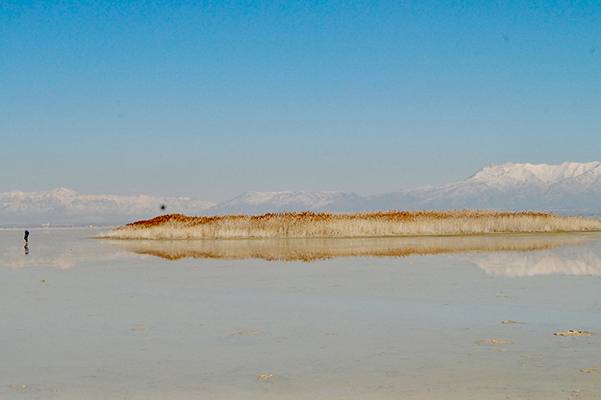
Great Salt Lake’s mystery islands
As Great Salt Lake’s levels continue to sag, yet another strange phenomenon has surfaced, offering Utah scientists more opportunities to plumb the vast saline lake’s secrets. Phragmites-covered mounds in recent years have appeared on the drying playa off the lake’s southeast shore. After several years of scratching their heads, University of Utah geoscientists, deploying a network of piezometers and aerial electromagnetic surveys, are now finding out what’s going on under the lakebed that is creating these reed-choked oases.
-
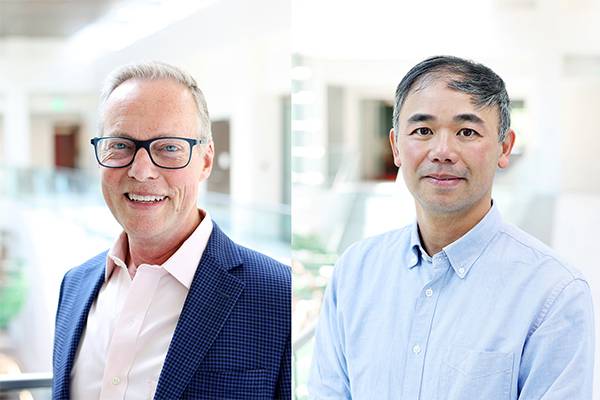
Wilkes Center names leadership team for expanded climate mission
The Wilkes Center for Climate Science & Policy at the University of Utah has selected Fielding Norton as its new managing director and John Lin as scientific director to lead the center’s increasing focus on translating climate research into real-world solutions. Norton, a climate scientist and startup investor and advisor, will head the center's overall strategy and operations, while Lin, a U atmospheric sciences professor, will oversee its research initiatives and academic programs.
-
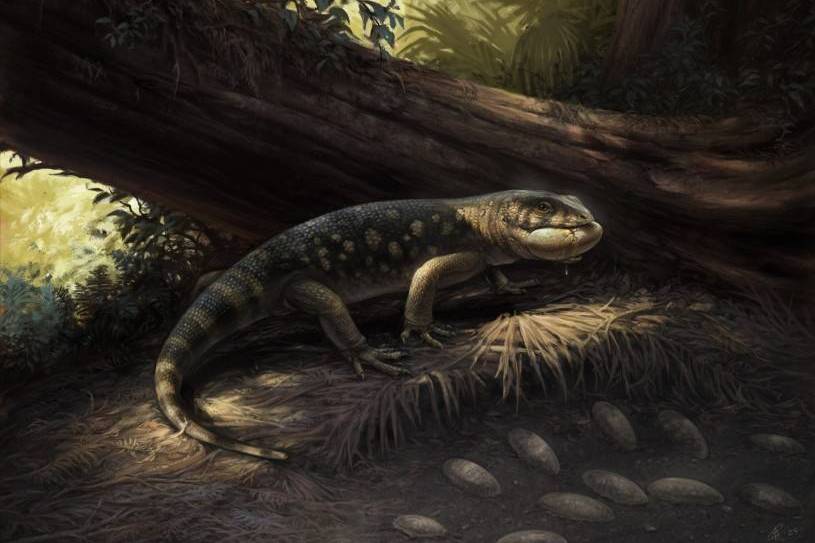
New monstersaur species a ‘goblin prince’ among dinosaurs
A newly discovered, raccoon-sized armored monstersaurian from the Grand Staircase-Escalante National Monument in Southern Utah, United States, reveals a surprising diversity of large lizards at the pinnacle of the age of dinosaurs. Named for the goblin prince from J.R.R. Tolkien’s “The Hobbit,” the new species Bolg amondol also illuminates the sometimes-murky path that life traveled between ancient continents.
-
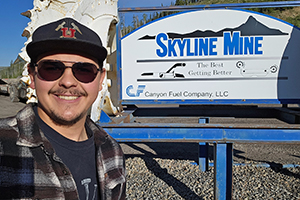
Thriving in the Cadences of College
Jacob 'Jake' White, who just completed his first year in the mining engineering program at the University of Utah, began his path in the field early. In his hometown of Syracuse, Utah he enrolled in the High School University Program (HSUP) that the U offers, allowing students to take classes at the U.
-

Earthquake Hazard Models
The sediments underlying the Salt Lake Valley are thicker in places than previously thought, indicating that current seismic hazard models likely underestimate the amount of shaking Utah’s population center could experience in future earthquakes, according to new research led by University of Utah seismologists.
-
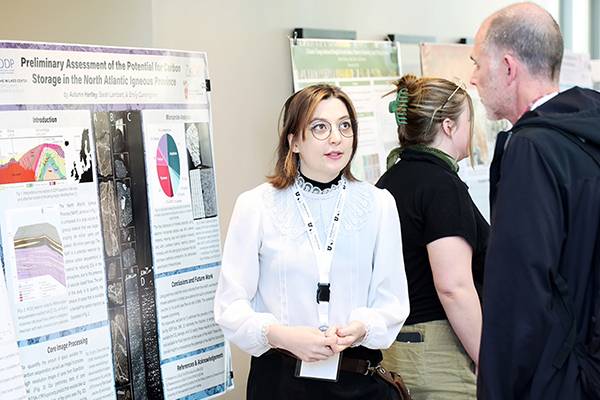
Urgency and hope at 2025 Wilkes Climate Summit
“Let’s start with the three pillars of urgency. Climate change—it’s here, it’s us, and it’s damaging,” said William Anderegg, director of the Wilkes Center for Climate Science & Policy at the University of Utah. “There are also three companion pillars of hope—it’s solvable, we’re making progress, and the benefits of solving it are enormous.”
-
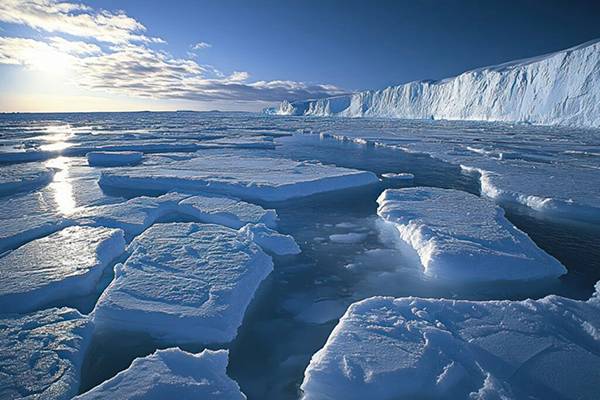
Unravelling Nature’s Marine Cloud Brightening
Recent research conducted by Dr Gerald Mace from the University of Utah and colleagues reveals how air masses passing over the Antarctic continent naturally boost cloud brightness through a complex chain of chemical and physical processes. This natural phenomenon may hold important clues for improving climate models and predicting future climate change.
-

Not Just A Major. It's A Mission.
Mining engineering majors at the U are immediately thrust into inter-disciplinary study that includes geology, engineering design, environmental stewardship, safety systems and more. Unlike perhaps other majors in the College of Science/College of Mining and Earth Sciences, mining majors experience hands-on training at mine locations that they are likely to land full-time positions at before graduation.
-

The power of curiosity and collaboration
Over the course of an academic career spanning five decades, the University of Utah geoscientist has developed numerous forensic tools, such as isotope analysis, for understanding geological processes that affected the course of life on Earth, according to presentations given Saturday at a symposium to reflect on the contributions of Cerling, who is retiring this year.
-
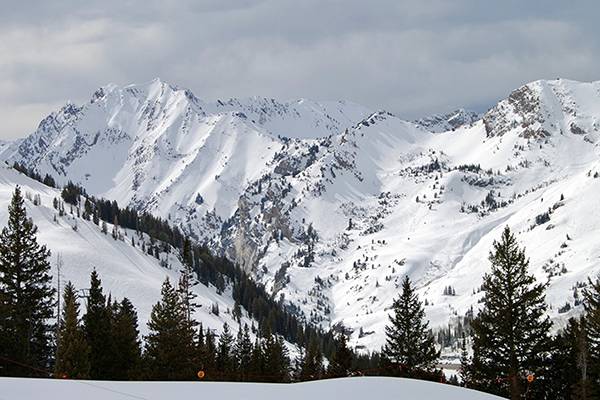
Spring Runoff is Older than You think
Research by U hydrologists finds water flowing out of Western ranges is, on average, more than 5 years old, demonstrating that runoff has a prolonged underground journey.
-
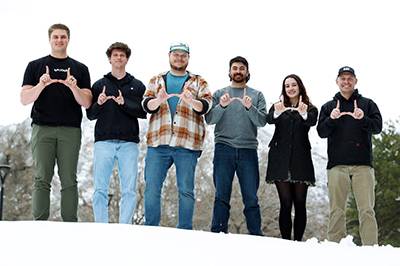
The Silence of Safety
The University of Utah's Mine Rescue Team demonstrates the value of safety. The importance of safety is difficult to state when things are going well. You’re never going to read a news story about the life that wasn’t lost in an accident, or read a statistic about all the disasters that were passively averted. When things are going well safety measures feel downright mundane, but that’s exactly why they are so important to highlight and celebrate. It means they are working, that tragic stories are being averted and lives are being preserved.
-

Fredrick Manthi elected to the National Academy of Sciences
Fredrick Manthi's election to the National Academy of Sciences is incredibly well-deserved and represents decades of meticulous field research and scientific dedication," said Thure Cerling, Distinguished Professor of Geology & Geophysics and Biological Sciences at the University of Utah and fellow NAS member. "His pioneering work has advanced our understanding of early human evolution, and his connection to Utah has enriched our research community immensely.
-
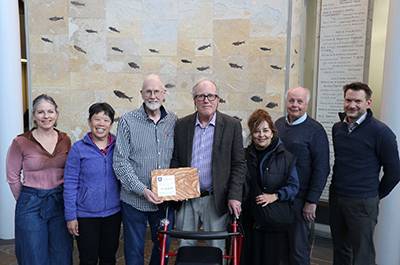
Jay Quade, Distinguished Alumnus
One of the outstanding field geologists of the modern day, Jay Quade has provided great insight into the geochemistry of the near-surface (surficial) environment. His Ph.D. work set the stage to document isotope diffusion as the determining factor in soil carbonate profiles. He followed this with work in the Siwaliks of Pakistan and showed that major ecosystem changes, including the expansion of C4 grasslands, are recorded in soils through both d13C and d18O isotopic analysis.
-

Kip Solomon, Distinguished Professor
The College of Science congratulates Kip Solomon on this well-deserved recognition," said Pearl Sandick, interim dean of the College of Science. "As a hydrogeologist, Solomon has developed the use of dissolved gases to evaluate groundwater travel times, location and rates of recharge, and the sustainability of groundwater resources — findings that enhance our efforts to improve water management in the American West. His teaching over the years as well as his service to the department as a former chair and now interim chair epitomize his dedication to the field and the university.
-
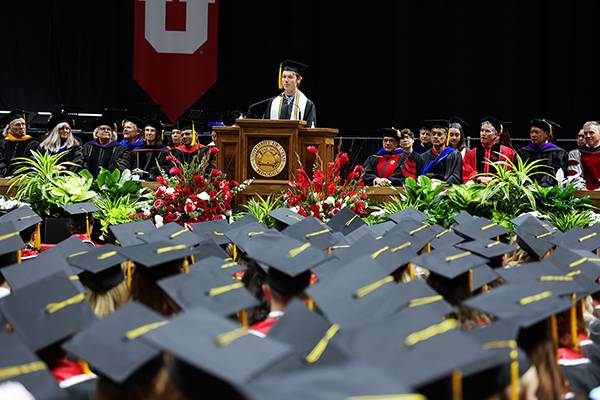
2025 Convocation Student Speaker: Marcus Tanner
Friends, classmates, scientists, biologists, congratulations on blazing your trail through your undergraduate degrees! No matter how long it took you to get here or what path you took, this is the culmination of all your hard work … but this is not the end of your education, or at least I hope it isn’t, and I don’t mean whatever post-graduate programs you might be attending after we toss our caps. I hope you continue to learn and challenge yourselves long into the future.
-
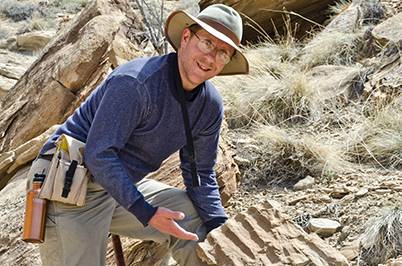
Getting miners home safe at night
At 43, King is not your typical graduate student. He’s worked in oil fields and mines, taught high school science, flipped houses, run a rental business, and even planned a year-long move to Spain. Now, he’s a student in the first-ever cohort of a master’s program at the University of Utah focused on mining safety. The interdisciplinary program is a collaboration between the U’s Department of Mining Engineering at the Rocky Mountain Center for Occupational and Environmental Health.
-
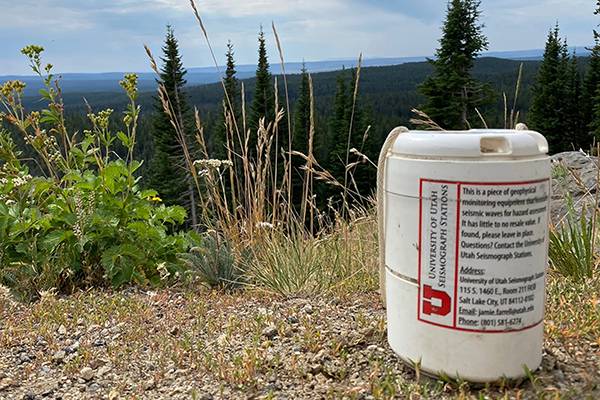
Yellowstone Magma Reservoir
Beneath Yellowstone lies a magma reservoir, pulsing with molten and superheated rock and exsolved gases. Scientists have long known about the chamber’s existence, but they have yet to precisely locate its uppermost boundary and characterize the contents of the chamber closest to the surface—information crucial for understanding the potential perils this volcanic feature poses.
-

For a while, crocodile
(Photo credit: Jorge Gonzalez) The ancestors of today’s crocodylians survived two mass extinction events. A new study uncovered a secret to their longevity, which could help conservationists better protect our planet’s most vulnerable species.
-
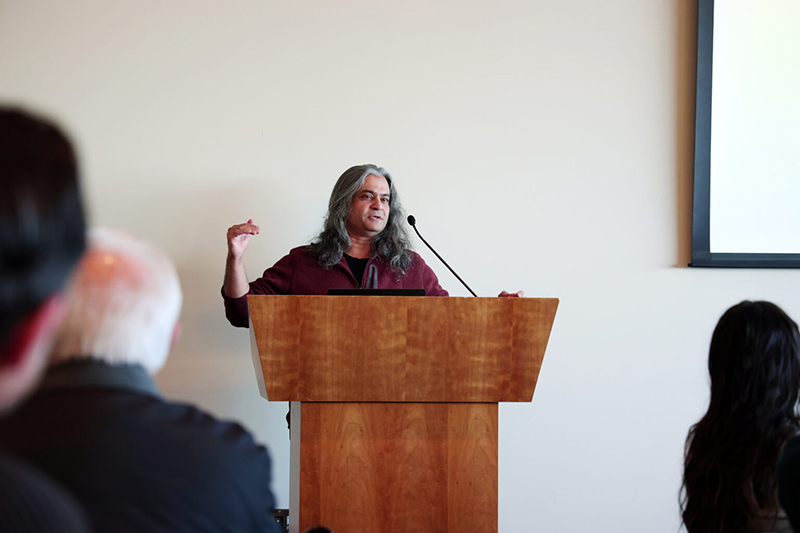
Diagnosing TB Globally
(Photo credits: Todd Anderson) Swomitra Mohanty at the University of Utah is developing nanotube sensors for diagnosing tuberculosis (TB) through breath samples. This innovative approach aims to provide accurate, affordable, and rapid TB diagnosis, addressing significant global health disparities.
-
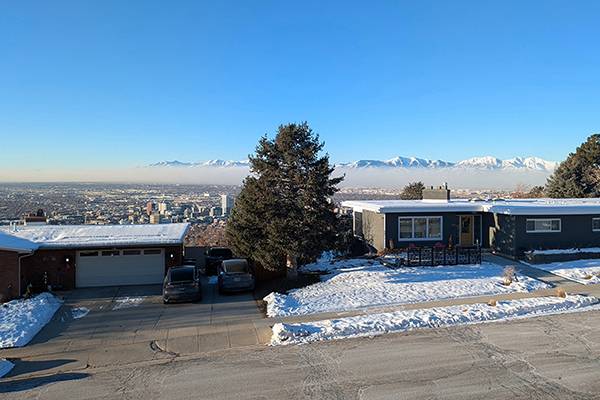
Dust in the Wind: How cities alter natural airborne particles
(Photo credit: Jim Steenburgh) Salt Lake's locally sourced dust pollution carries far more hazardous elements than natural dust blown in from Great Basin. Airborne dust pollution has been a concern for Utahns for several years, especially with the exposed lakebed of Great Salt Lake potentially becoming more hazardous as the lake dries. Natural dust blows from the Great Basin and settles along the western edge of the Wasatch Front, Utah’s major population center, and the surrounding mountains.
-
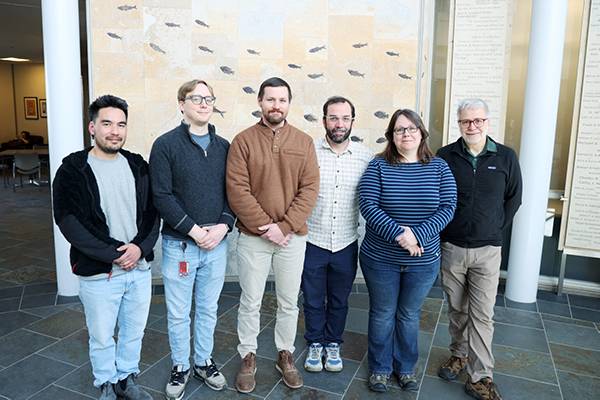
New state-of-the-art mass spectrometer
Instrument will help scientists unravel Earth's ancient geological mysteries, past climates and humans' ongoing interactions with the environment. The University of Utah’s Department of Geology & Geophysics has been awarded a million-dollar grant from the National Science Foundation (NSF) to acquire state-of-the-art mass spectrometry instrumentation for measuring isotope ratios of heavier elements at the precision needed to perform cutting-edge research into Earth’s deep past.
-
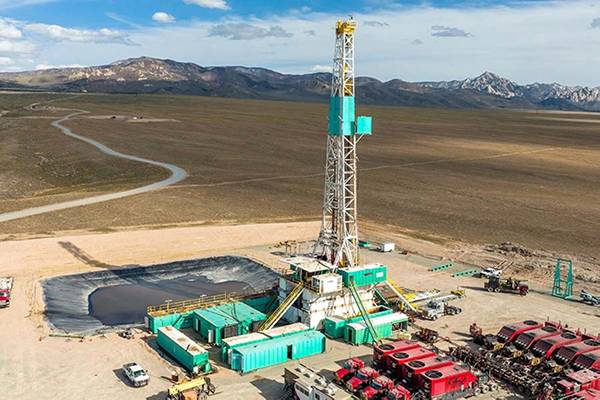
A Climate Moon Shot Beneath Our Feet
North Milford Valley, in western Utah, is home to dormant volcanoes, subterranean lava deposits, and smatterings of obsidian—black volcanic glass—that Paiute peoples once collected for arrowheads and jewelry. Scalding groundwater still bubbles to the surface in places.
-
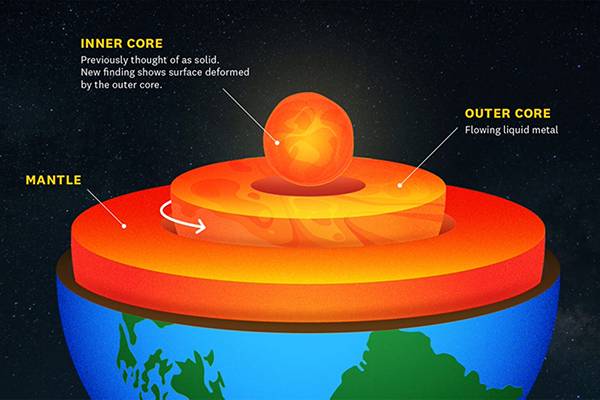
Maybe Earth’s inner core is not so solid after all
New research suggests the surface of the inner core is deformed from contact with turbulent liquid outer core. The surface of Earth’s inner core may be changing, as shown by a new study led by University of Southern California and University of Utah scientists that detected structural changes near the planet’s center, published Monday in Nature Geoscience.
-
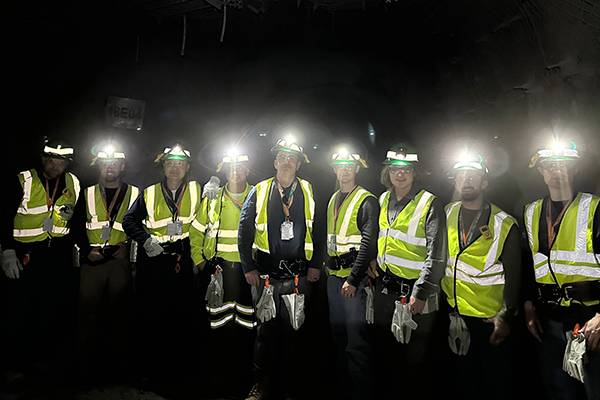
Meeting of the MINES
For Pratt Rogers, the new chair of the Mining Engineering Department at the University of Utah, the future of our technological and information-driven society as we are living it now and imagining it in the future is going to require a meeting of the minds.
-
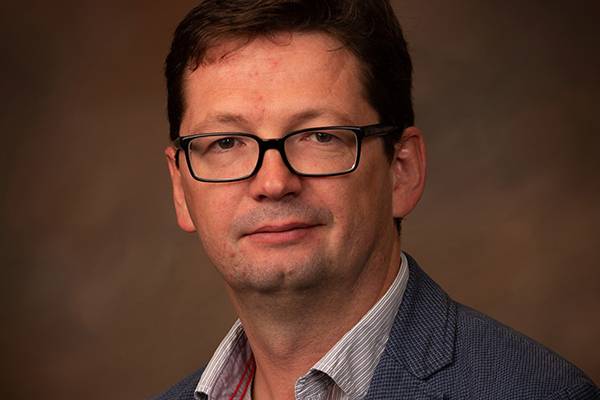
Dmitry Bedrov, new Chair of MSE
Peter Trapa, dean of the College of Science, announced the appointment of Dmitry Bedrov as the new chair of the Department of Materials Science and Engineering (MSE) at the University of Utah as of January 1. He replaces Mike Free who will move to the appointment of associate chair of the department which Bedrov earlier held.
-

Funding for critical materials consortia
“Rebuilding a domestic supply chain for critical minerals and materials here at home will both safeguard our national security and support the continued development of a clean energy and industrial economy,” says Brad Crabtree, Department of Energy (DOE).
-
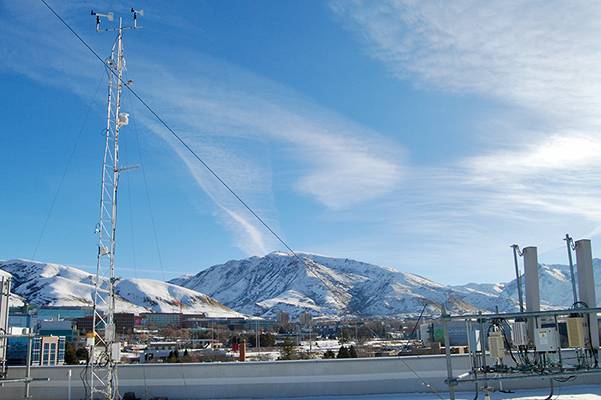
Technology for oxidizing atmospheric methane won’t help the climate
As the atmosphere continues to fill with greenhouse gases from human activities, many proposals have surfaced to “geoengineer” climate-saving solutions, that is, alter the atmosphere at a global scale to either reduce the concentrations of carbon or mute its warming effect.
-
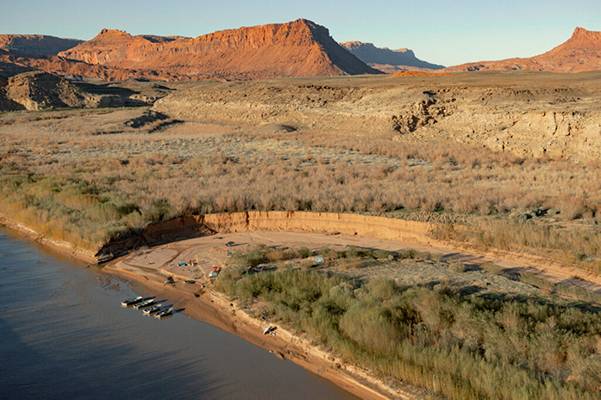
Sediment Stories
Sometimes geologic inquiry presents itself so forcefully and on its own timetable that researchers have little choice but to "go with the flow," as it were. That has certainly been the case of late in the American Southwest as mega-drought conditions have plunged the nation's largest reservoirs to new lows and terrain, underwater for decades, is quickly being daylighted.
-

Down to Earth 2024
It is my pleasure to report that the Department of Geology & Geophysics is thriving. As the interim chair I am proud of our collective accomplishment, and I'm thrilled to share some highlights with you in this edition of Down to Earth.
-

How snowflakes get their intricate shapes
Snowflakes are like letters from the sky, each crystal a note describing the atmosphere as it falls to the ground. They float effortlessly, but their creation is one of nature’s most complicated physics feats.
-
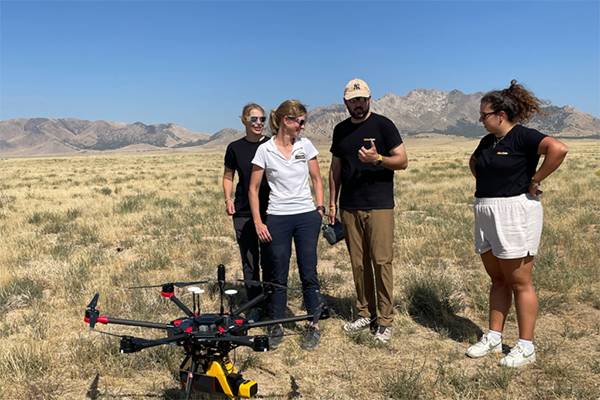
FORGE Workshop with Alumna Anke Friedrich
The good news for the Utah Frontier Observatory for Research in Geothermal Energy (FORGE) managed by the U is that with an additional $80 million in funding from the Department of Energy, the project is fully funded through 2028.
-

Urban 'Cool Zones'
A research associate professor in the Department of Atmospheric Sciences at the University of Utah, Daniel Mendoza is not your typical academic scientist. With an impressive list of publications, averaging a new paper each month, academic scholarship is only one of his accomplishments.
-

Monitoring Urban Carbon Emissions at the Global Scale
Faculty in the University of Utah's Department of Atmospheric Sciences, Lin is co-author of a paper in the journal Environmental Research Letters about a new satellite-based system for measuring CO2 emissions in support of global collective climate mitigation actions. As nations and cities continue to state their intentions to decarbonize for the purpose of becoming, in their activities, carbon-neutral, “we want to be able to see it happen from space.”
-

Bioinformatics BS - Translating Data into Scientific Breakthroughs
Bioinformatics sits at the vital intersection between mathematics, life science, and data science. This cutting-edge field applies intensive computational methods to analyze and understand complex biological information related to health, biotechnology, genomics, and more.
-
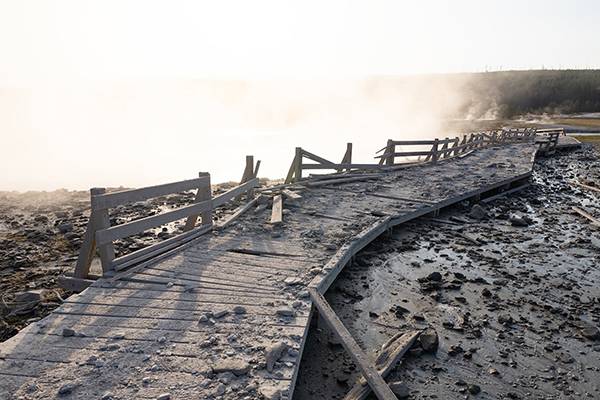
Don’t Let This Blow You Away: Yellowstone’s Steam Threat
A hydrothermal explosion on July 23 at Yellowstone National Park sent visitors running for cover as steam shot into the air and rocks rained down on a popular viewing area.
-
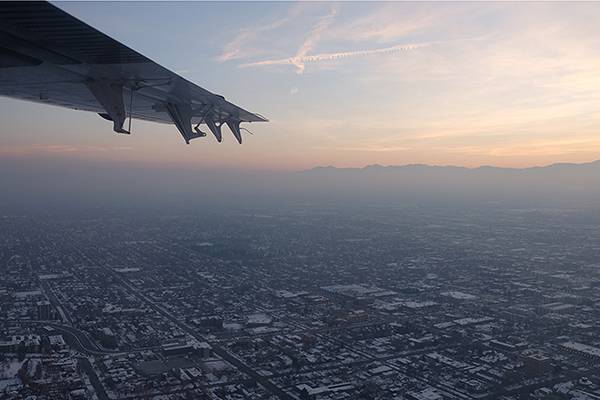
Solving the Puzzle of Utah’s Summer Ozone
The Salt Lake Valley’s summertime ozone pollution is a complicated puzzle because so many different kinds of emissions contribute to the problem, which in turn is affected by the time of day or year, the weather and many other factors. Without knowing which emissions are most culpable or understanding the role of the region’s topography, solutions to Utah’s ozone mess will remain elusive.
-
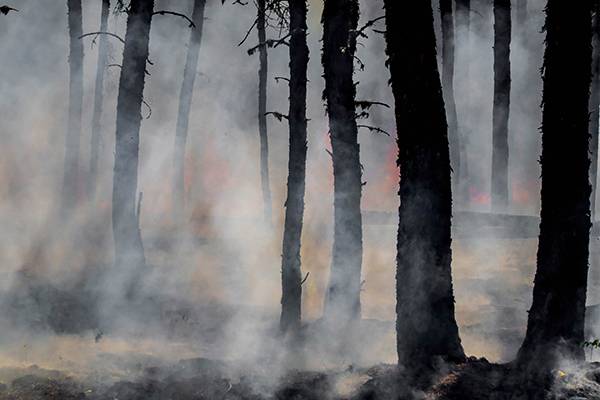
Scientists Use AI to Predict a Wildfire's Next Move
University of Utah Atmospheric Scientist Derek Mallia joins seven other researchers at University of Southern California and elsewhere in developing a new method to accurately predict wildfire spread.
-

What do cycling and rocks have to do with each other?
University of Utah geologists Peter Lippert and Sean Hutchings are helping bring attention to the hidden star of a major sporting event this summer.
-

From Curious Volunteer to Dinosaur Discoverer
Savhannah Carpenter’s route to being the only student listed on the research team credited with finding the world’s newest horned dinosaur didn’t follow a straight line.
-
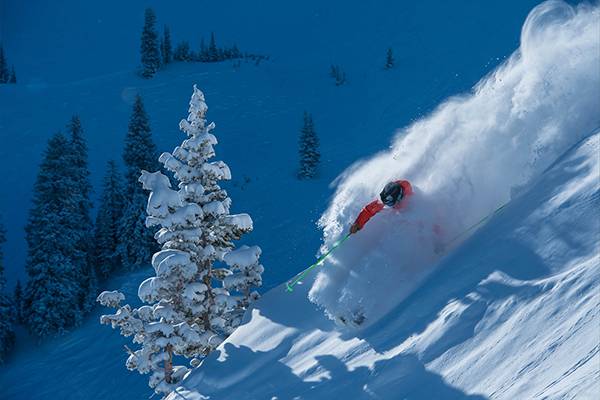
From Mountains to the Great Salt Lake: The Secrets of Snowmelt
Utah’s snowpack has been smashing records. The combined totals for the 2022-24 winter seasons were 1,531 inches, the highest two-year snowfall in the state’s history.
-
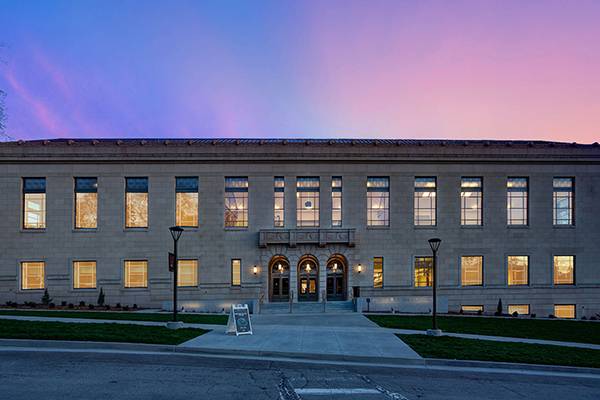
2024 College of Science Awards
The College of Science is committed to recognizing excellence in education, research, and service. Congratulations to all our 2024 College of Science award recipients!
-
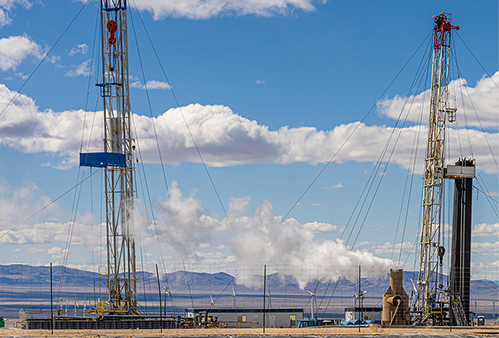
Utah FORGE achieves crucial geothermal milestone
A major University of Utah-led geothermal research project, funded by the U.S. Department of Energy (DOE), achieved a critical breakthrough in April after hydraulically stimulating and circulating water through heated rock formations a mile and a half beneath its drill site in the Utah desert and bringing hot water to the surface.
-
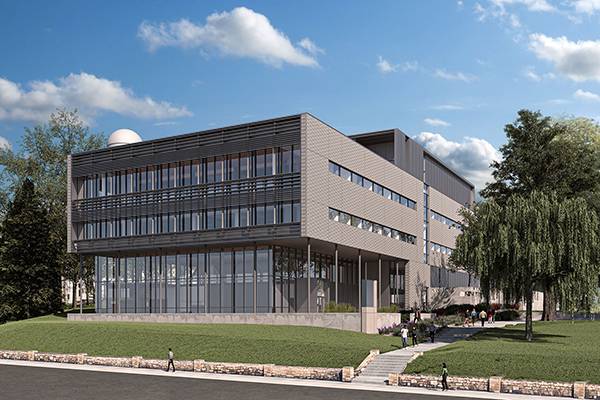
L.S. Skaggs Applied Science Building names at the U
The ALSAM Foundation has made a substantial gift toward the latest addition to the science campus at the University of Utah: the L.S. Skaggs Applied Science Building.
-
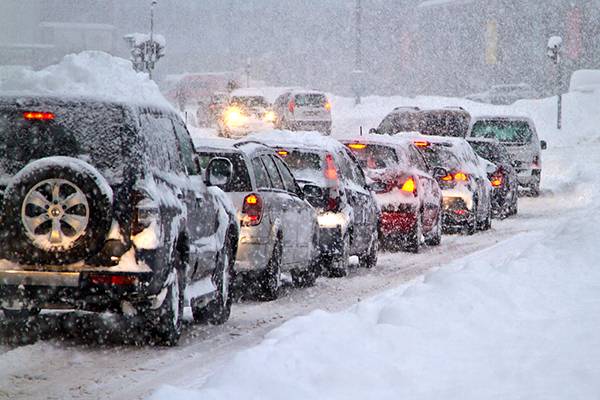
U of U included in $6.6M National Weather Forecasting Initiative
The partnership with NOAA, other universities aims to improve predictive weather models. The University of Utah is one of a six-institution consortium recommended to receive up to $6.6 million from the National Oceanic and Atmospheric Administration (NOAA) to improve weather forecasting through enhanced data assimilation methods.
-
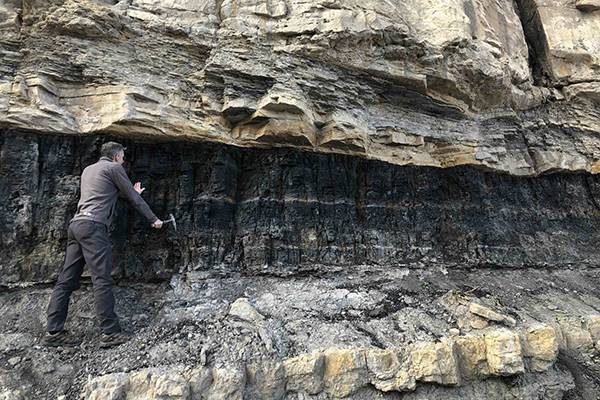
Tapping coal mines for rare-earth materials
In a groundbreaking study led by the University of Utah, researchers have discovered elevated concentrations of rare earth elements (REEs) in active coal mines rimming the Uinta coal belt of Colorado and Utah.
-
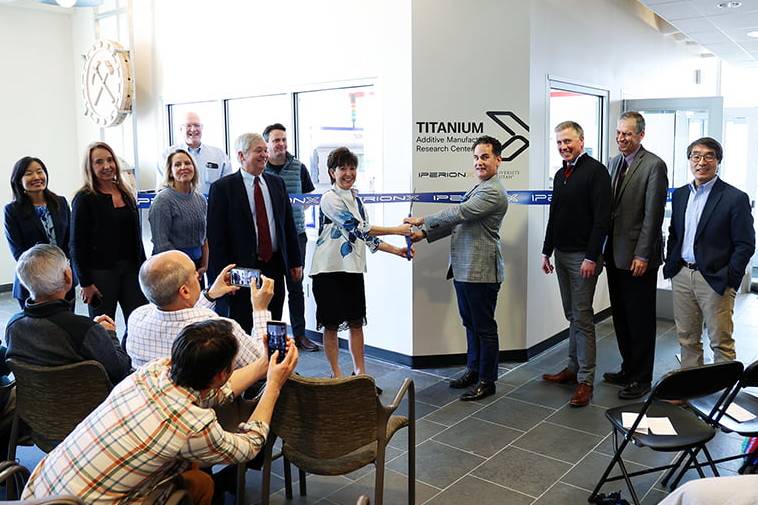
Materials science lab to advance metallurgical technologies
Titanium Additive Manufacturing Research Center established in collaboration between U's Zak Fang and IperionX to advance technologies for producing critical metals.
-
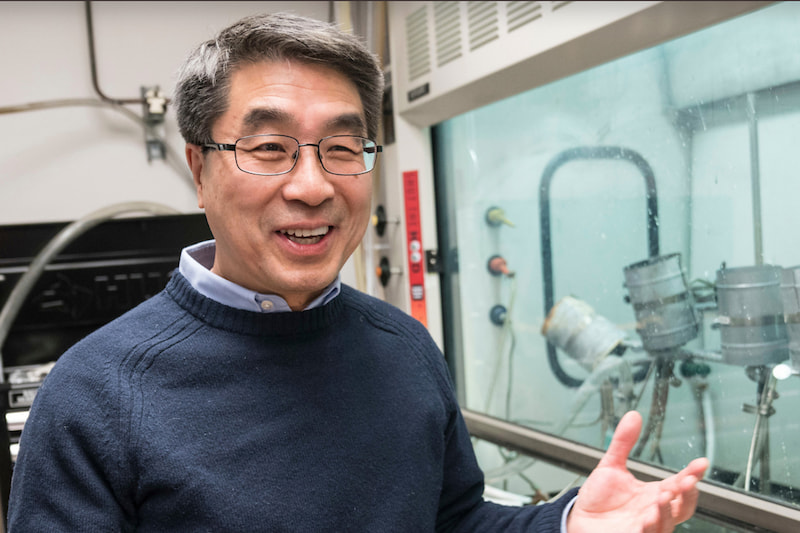
Greening Iron & Steel Production
A new infusion of federal funding through the Department of Energy (DOE) totaling $28 million will support some of the most cutting-edge efforts to decarbonize the dirty steel industry, and the University of Utah has received the largest award (~ $3.5 million) of the 13 projects in nine states.
-
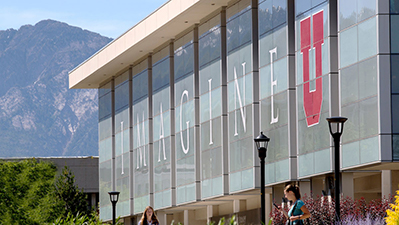
University of Utah launches Peak Water Sustainability Engine
Water is essential to life and a frequent research topic at the University of Utah. To increase research related to water, the U is excited to announce the launch of Peak Water Sustainability Engine (Peak Water). Engines are research hubs that bring together faculty, communities, governments, and industry to engage key societal challenges.
-
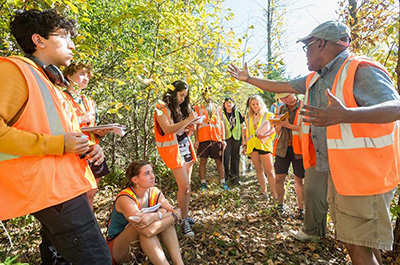
Placing Geology at Foundation of Essential Discoveries
Bereket Haileab, a graduate of the geology program at the University of Utah MS 1988 PHD 1995, currently serves as the chair and professor of geology at Carleton College. With a commitment to both research and teaching, he has made significant contributions to the field. In 1985 Haileab joined a University of Utah research group that mapped the Turkana Basin in Kenya, which helped confirm the age of "Turkana Boy," a Homo ergaster fossil dating back 1.6 million years*. His experiences have fueled his dedication to exploring the interdisciplinary intersections of geology, particularly in paleoanthropology. He has pursued this passion through fieldwork in various locations, including western Ethiopia and the Turkana Basin in Kenya.
-
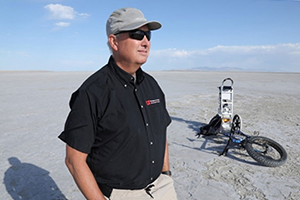
Kevin Perry, Societal Impact Scholar
University of Utah President Taylor Randall has named five faculty members as 2024-25 Presidential Societal Impact Scholars for exemplary public engagement, including Atmopsheric Sciences Professor Kevin Perry.
-
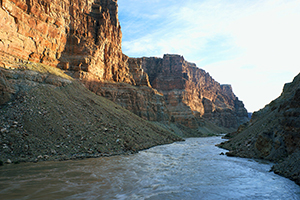
Cataract Canyon Comes Back to Life
Sixty years ago, this stretch of river was considered as ferocious — and nearly as beautiful — as the Grand Canyon. Then, in 1963, the Glen Canyon Dam was built to store water for human use, which backed up the Colorado River behind it to create Lake Powell.
-
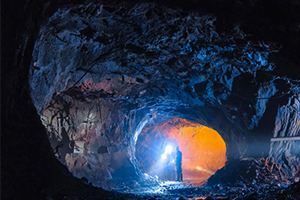
Common Ground 2023
Check out the latest publication from the Department of Mining Engineering.
-
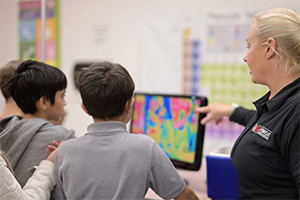
Busy as a Beaver: Utah Forge
Deep in the heart of this rocky area in the western United States, FORGE researchers, scientists, and other professionals are working hard to advance enhanced geothermal systems (EGS). FORGE has realized many achievements in EGS since GTO launched the initiative in 2015—including becoming a full-scale underground research laboratory with eight wells covering more than 10 miles drilled in total.
-
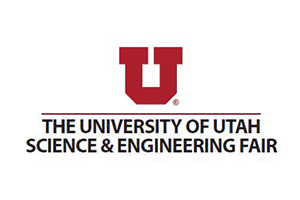
U of U holds first fully in-person Science and Engineering Fair since 2019
The University of Utah recently held its first Science and Engineering Fair fully in-person since 2019. The University of Utah Science & Engineering Fair (USEF) is an annual science & engineering competition for students in grades 5-12.
-
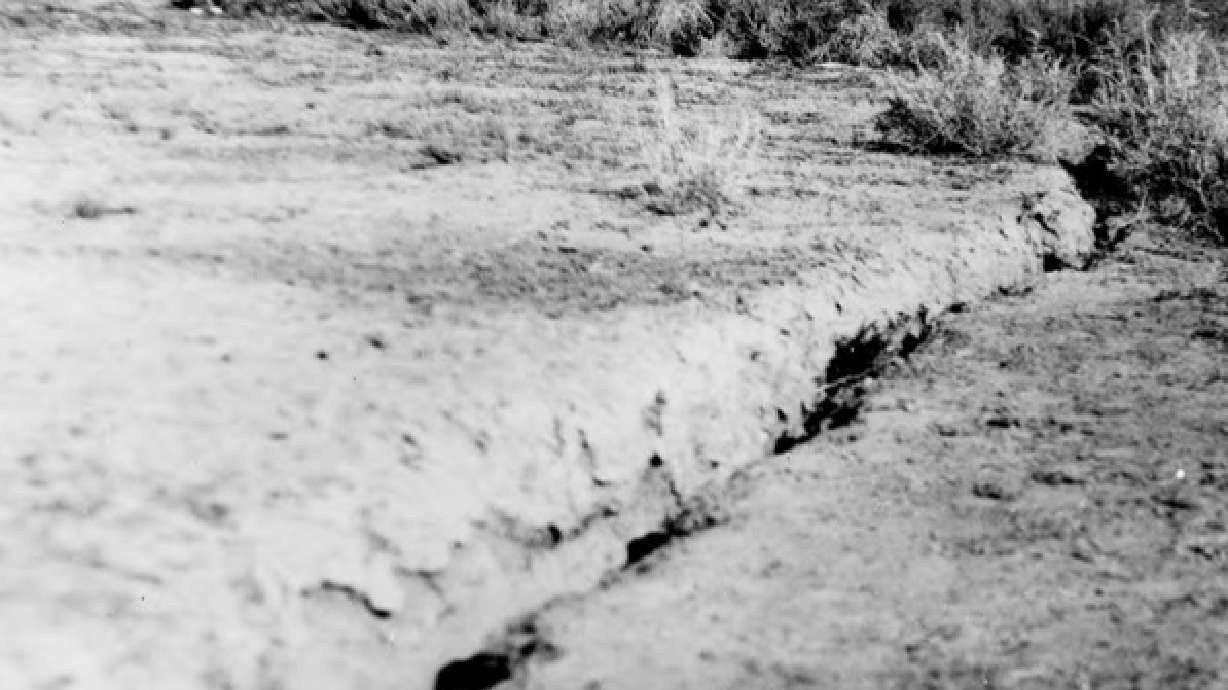
How a 6.6 magnitude quake 90 years ago transformed Utah's earthquake science
1934 was an interesting year in Utah to say the least. It remains the state's hottest year on record and its third-driest, as drought conditions crept into a state already struggling through the depths of the Great Depression. It's also when one of the largest earthquakes in state history rattled northern Utah and the Wasatch Front.
-
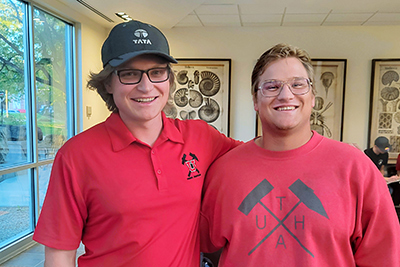
Friends Along the Way
The Mining Open House last fall was an introduction to the public, including students looking for a major, but for two seniors in the University of Utah's Department of Mining Engineering, it was the final year of a harrowing undergraduate career. Harrowing not because of the rigorous training in Vulcan and Python software; or the upper-division math that (with one additional class) would have given them a minor; and it wasn't because of the summer internships in various cool mining environments simpatico with the on-boarding to mining engineering they were more than eager to engage.
-
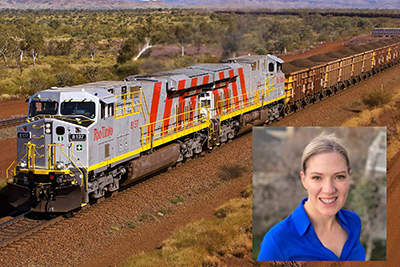
Amanda Smith, Distinguished Alumna
The John E. Willson Distinguished Alumnus Award was established in 2000 to recognize graduates of the University of Utah’s Mining Engineering Program who have set high standards by their professional accomplishments and service to the mining industry. The 2023 distinguished alumna is Amanda Smith BS’01 and MS’02. She was awarded in April of last year.
-
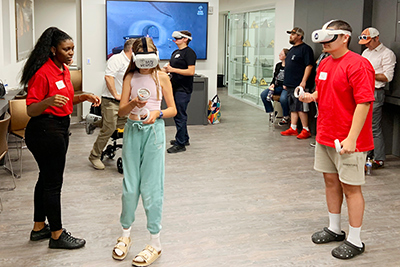
Immersive VR & Mine Safety
The Center for Mine Safety and Health at the Department of Mining Engineering, University of Utah in collaboration with Minverso has developed the initial phase of a first-ever metaverse platform which includes a Health & Safety training program for the mining industry developed by using virtual reality (VR) technology.
-
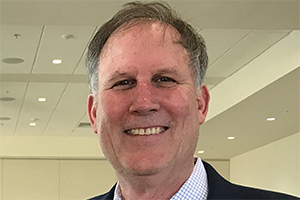
2022 Distinguished Alum: Harley Benz
Among the nation’s preeminent earthquake seismologists, Harley Benz MS’82, PhD’86, scientist emeritus at the US Geological Survey (USGS)’s Earthquake Hazards Program, first worked at the USGS in Menlo Park, California, and then, beginning in 1993, in Golden, Colorado.
-
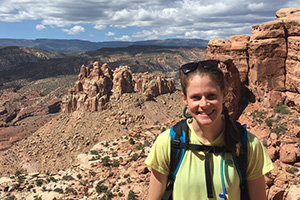
Sizing up Courthouse Crack
Geohazards are a source of useful research into landslides and how they happen. PhD student Erin Jensen used seismic resonance measurements to characterize the Courthouse Crack.
-
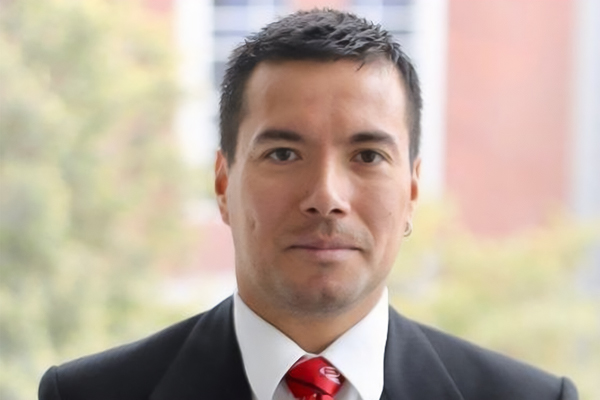
Black Carbon Sensor Could Fill Massive Monitoring Gaps
Black carbon is the most dangerous air pollutant you’ve never heard of. Its two main sources, diesel exhaust and wood smoke from wildfires and household heating, produce ultrafine air particles that are up to 25 times more of a health hazard per unit compared to other types of particulate matter.
-
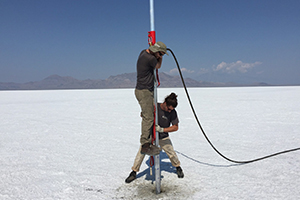
Utah’s Bonneville Salt Flats has long been in flux
Salt crusts began forming long after Lake Bonneville disappeared, according to new U research that relied on pollen to date playa in western Utah.
-
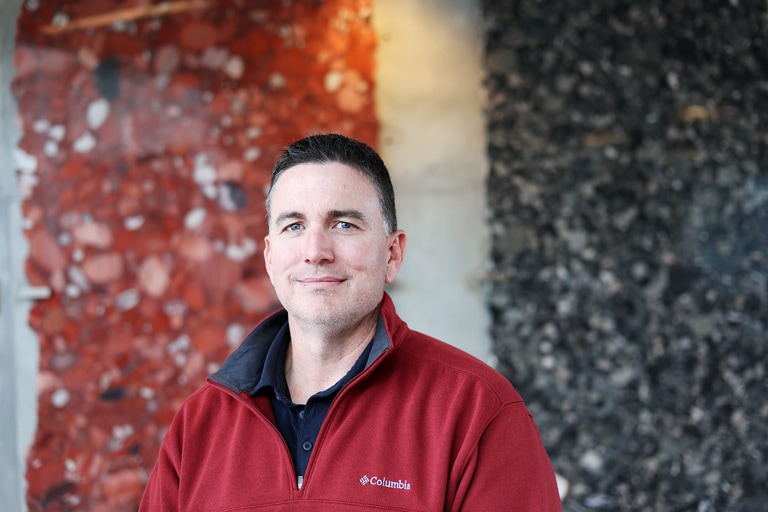
A Moonshot for Our Age
Reconciling mining with the effort to make the 21st century more sustainable is necessary yet difficult, but mining faculty member Pratt Rogers is focused on the challenge.
-
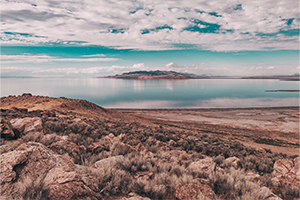
New NSF Initiative to Ensure Regional Climate Solutions and Economic Opportunities.
The National Science Foundation (NSF) on Monday announced the University of Utah along with six core academic partners will be part of a multi-institutional enterprise to confront the climate challenges facing the desert Southwest and spur economic development in the region.
-
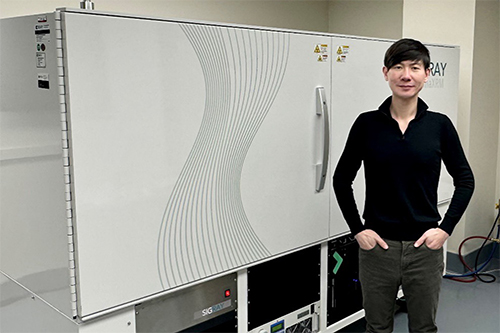
Getting the Right Image
New X-ray Instrument keeps up the global-leading high-resolution 3D imaging research in metallurgical engineering at the University of Utah.
-
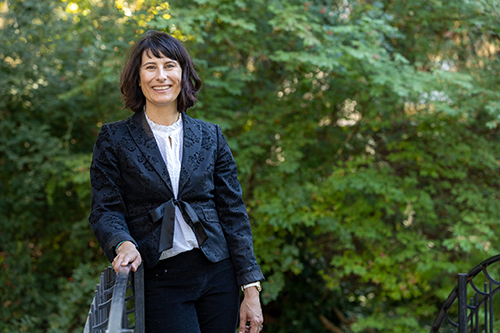
Coal Miner's Daughter
Spotlight on the first woman chair of the Mining Engineering Department’s Industrial Advisory Board — Denee Hayes.
-
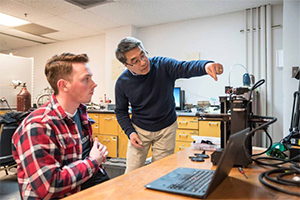
Metallurgical Engineering Professors Sign a $10M/10-year Research Agreement
Metallurgical Engineering Professors in the Department of Materials Science and Engineering at the University of Utah recently signed a research agreement with IperionX (IPX) for $10MM over ten years, effective January 1, 2024.
-
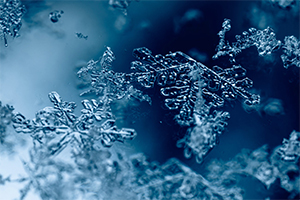
The science behind snowflakes
In a study that could enhance weather forecasting, Utah researchers discover that how snowflakes move is astonishingly predictable.
-
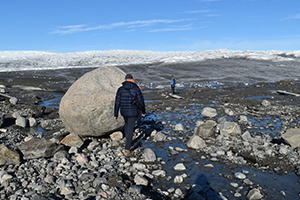
Geoscientists map changes in atmospheric CO2 over past 66 million years
Today atmospheric carbon dioxide is at its highest level in at least several million years thanks to widespread combustion of fossil fuels by humans over the past couple centuries.
-
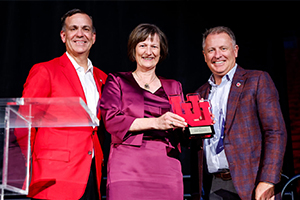
Anke Friedrich inducted into Crimson Club Hall of Fame
It's not every day that an esteemed scientist is recognized by the University of Utah's Athletic Department's Crimson Club Hall of Fame.
-
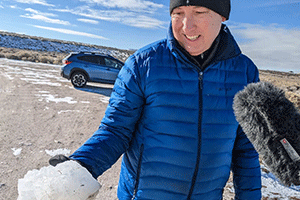
Do the Right Thing: Kevin Perry
Dr. Kevin Perry, an atmospheric scientist at the University of Utah, is one of the scientists working to save the Great Salt Lake from drying up.
-
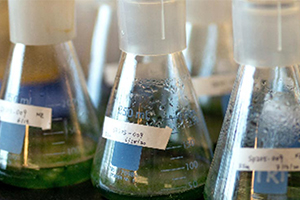
Belching Cattle Cause Major Damage
The University of Utah’s Wilkes Climate Center has awarded its first $1.5 million climate prize to a Seattle biotech firm, Lumen Bioscience, that has developed and patented enzymes that could potentially halve the climate-damaging methane that cows belch all day.
-
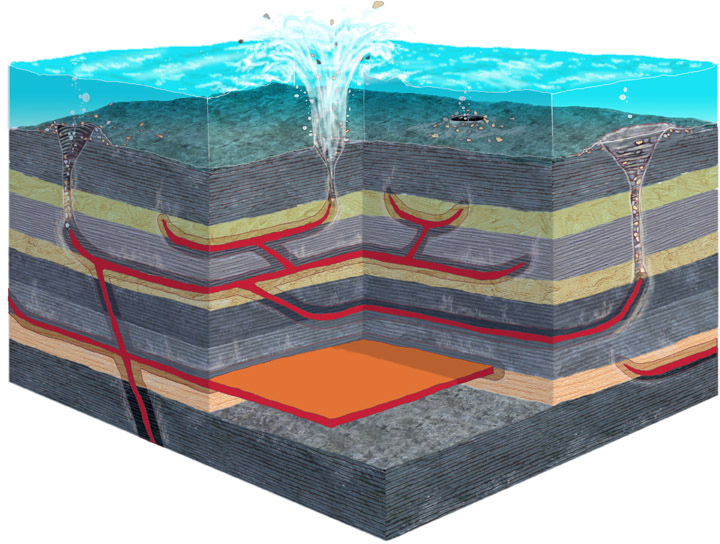
Ancient volcanism drove ancient global warming that marked the end of the Paleocene
New study shows hydrothermal vents released vast amounts of methane 56 million years, helping disrupt the climate and spur an evolutionary burst that led to the rise of mammals.
-
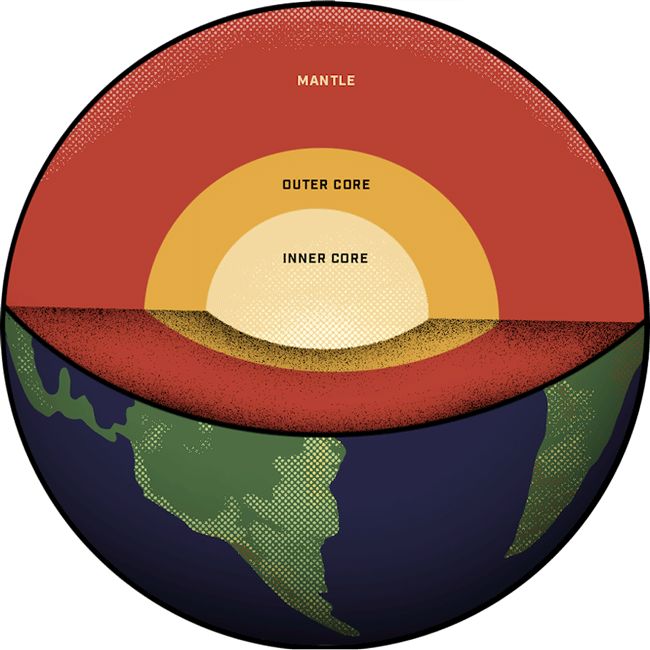
U Seismologists Probe Earth's Inner Core
How Earth’s inner core formed, grew, and evolved over time remains a mystery, one that a team of University of Utah-led researchers is seeking to plumb with the help of seismic waves from naturally occurring earthquakes.
-
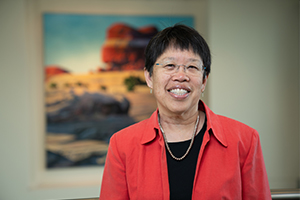
Establishing an Ethic of Sampling for Future Generations of Geoscientists
Congratulations Marjorie Chan for publishing the recent paper Establishing an Ethic of Sampling for Future Generations of Geoscientists in the GSA (Geological Society of America).
-
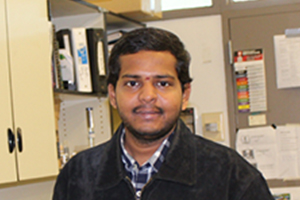
Groundbreaking Paper Featured in REIA Weekly Newsletter
Subbu Pathapati's groundbreaking paper on various separation technologies for rare earths, done under the supervision of Dr. Prashant Sarswat and Dr. Mike Free, has been featured in the latest edition of the REIA Global Rare Earth Industry Weekly Newsletter! Don't miss out on this insightful research that explores strategies such as precipitation and crystallization, oxidation and reduction, ion exchange, adsorption, solvent extraction, and membrane separation.
-
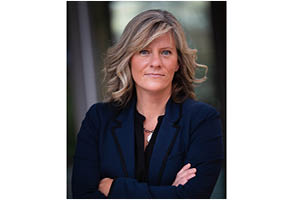
Brenda Bowen Name GSA Fellow
Congratulations to Professor Brenda Bowen on being elected a @geosociety Fellow, nominated for outstanding contributions in public awareness of geology, educating various communities about environmental change due to both natural and anthropogenic causes in salt lakes and desert landscapes, with the aim of understanding geological processes and achieving sustainable land management.
-

What can earthquake 'swarms' tell us about seismicity in the West?
"We're all worried about the Wasatch Front, but the other thing to know is we have earthquakes all over Utah," said Pankow. "We recorded a certain level, but in some of these places there's probably earthquakes happening all the time that we just don't see. That's something that's really important to get an understanding of." -Kristine Pankow, research professor of geology
-
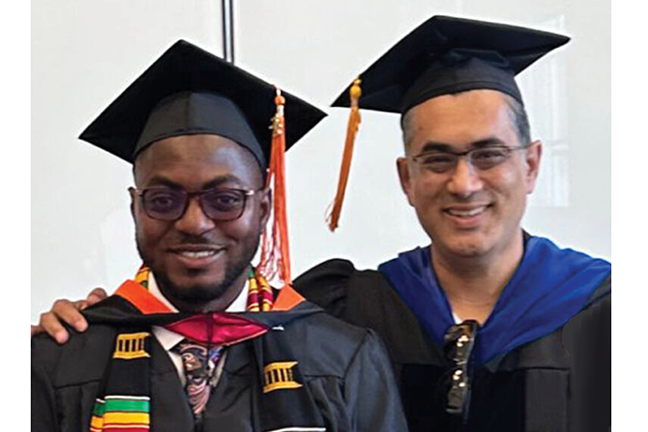
Making Machine Learning Accessible to All
Rajive Ganguli, associate dean of assessment, is launching UteAnalytics, a new, free analytics software which makes artificial intelligence (AI) or machine learning (ML) accessible to all.
-
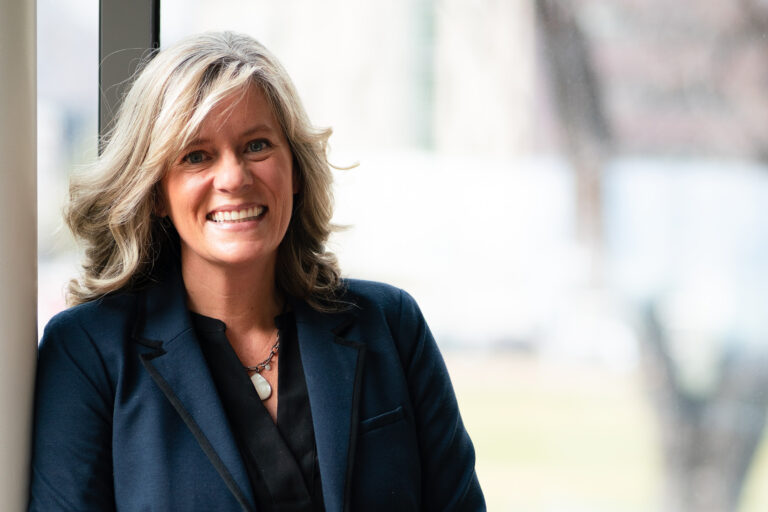
Brenda Bowen, New Chair of Atmospheric Sciences
The College of Science and the College of Mines and Earth Sciences (CMES) are pleased to announce that Professor Brenda Bowen has agreed to serve as the next chair of the Department of Atmospheric Sciences (ATMOS).
-

Zhigang Zak Fang: Humboldt Award
Titanium (Ti) metal, prized for its high strength-to-weight ratio, corrosion resistance and biocompatibility is a critical material in aerospace, defense, and medical applications, but its wider use is obstructed by excessively high costs.
-

Darryl Butt: Finding One's Professional Self
Where does an outgoing dean of the College of Mines & Earth Sciences (CSME) go? In the case of Darryl Butt, he becomes the dean of the graduate school. University of Utah Provost Mitzi M. Montoya announced in March that Butt has accepted the offer and will begin his new role June 1.
-
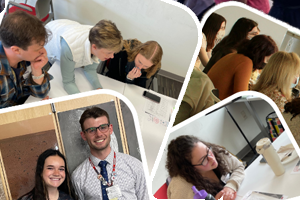
Teach for Utah and Noyce Scholarships
Two scholarships are available called Teach for Utah and Noyce that award up to $10,000 per year! There is no deadline as the STEM Initiatives award on a rolling basis, but students are encouraged to apply as soon as they are able. Additionally, students will receive personalized advising, mentoring, and career guidance. They also participate in career-enhancing monthly seminars with a supportive group of peers. Students who are interested in teaching science or math at the high school or middle school levels can contact Ally Rocks (ally.rocks@utah.edu) for more information.
-
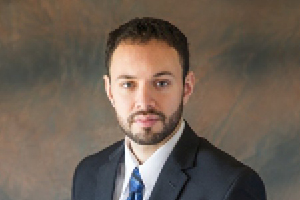
Kevin Mendoza Awarded Thomas G. Stockham Medal
Congratulations Kevin Mendoza for being recognized with the Thomas G. Stockham Medal for his contributions to undergraduate education in Geology & Geophysics. The Thomas G. Stockham, Jr. Medal is awarded to one graduate student each year for “conspicuously effective teaching.” Candidates for the medal are nominated by their faculty advisors and mentors. The recipient of the Stockham Medal will also receive a $1,000 cash prize.
-

Scientists Fear a Great Toxic Dustbowl Could Soon Emerge From the Great Salt Lake
On the shore of Great Salt Lake, Utah CNN — Like the rest of the West, Utah has a water problem. But megadrought and overconsumption aren’t just threats to wildlife, agriculture and industry here. A disappearing Great Salt Lake could poison the lungs of more than 2.5 million people. When lake levels hit historic lows in recent months, 800 square miles of lakebed were exposed – soil that holds centuries of natural and manmade toxins like mercury, arsenic and selenium. As that mud turns to dust and swirls to join some of the worst winter air pollution in the nation, scientists warn that the massive body of water could evaporate into a system of lifeless finger lakes within five years, on its way to becoming the Great Toxic Dustbowl. “This is an ecological disaster that will become a human health disaster,” warned Bonnie Baxter, director of the Great Salt Lake Institute at Westminster College in Salt Lake City, Utah. “We know about dust storms, we know about particulate pollution, we know about heavy metals and how they’re bad for humans,” she told CNN. “We see a crisis that is imminent.”
-
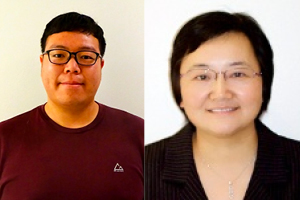
Atmospheric Science Ph.D. Student Chengfeng Feng Won Best Student Presentation Award at AMS Annual Meeting
Atmospheric Science Ph.D. student, Chengfeng Feng, advised by Professor Zhaoxia Pu, won a first-place Best Student Oral Presentation award at the 103rd American Meteorological Society Annual Meeting in January 2023. Feng’s presentation, “A bias correction scheme with the symmetric cloud proxy variable and its influence on assimilating all-sky GOES-16 brightness temperatures” examined an effective bias correction scheme for better assimilating all-sky NOAA geostationary satellite data into numerical weather prediction model for improved weather prediction. “I feel honored to receive this award,” Feng said. “I am very grateful to Dr. Zhaoxia Pu for supporting me in this innovative research and giving me opportunities to present my work at professional conferences.”
-
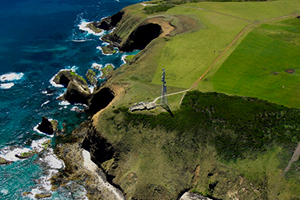
U Researcher to Lead Study of Clouds in Cleanest Air on Earth
A University of Utah atmospheric scientist, Gerald “Jay” Mace, is heading back to Tasmania to study clouds in a special part of Earth’s atmosphere: the Southern Ocean, which contains some of the cleanest air on Earth. Mace is the lead scientist of the Cloud And Precipitation Experiment at Kennaook (CAPE-K) is scheduled to run from April 2024 to September 2025 in northwestern Tasmania. The experiment, supported by the U.S. Department of Energy, will fill in knowledge gaps about the seasonal cycle of clouds and precipitation over the Southern Ocean. As a result, these data are expected to have big impacts on regional and global climate modeling. Climate projections for the entire Earth are sensitive to interactions of aerosols, clouds and precipitation in the atmosphere over the Southern Ocean. Seasonal variations in Southern Ocean aerosol properties are well documented, but to improve the accuracy of climate models, scientists need more information about the properties of low clouds and precipitation in the region.
-
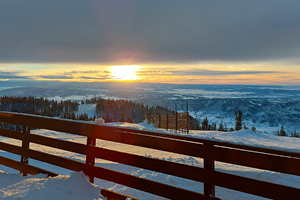
Human-Caused Emissions Create New Cloud-Forming Particles
Human activity is changing atmospheric chemistry—even in remote places—that could alter how and when clouds form. That’s the conclusion of a new study from University of Utah scientists and colleagues, which finds that measurements at a laboratory on a mountaintop in Colorado show new aerosol particles forming in the air on average every other day and that those particles, likely formed from gases emitted by nearby power plants, can grow until they’re big enough for water to condense around, forming clouds.
-
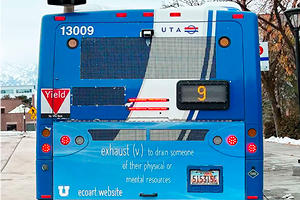
Art & Air Quality
UTA Trax cars zip from University hills to west-side valleys, past schools, shops and churches. Carrying more than just passengers, these cars hold research-grade air quality sensors. Soon they’ll carry something else: segments of public art piece In Search of Blue Sky, decorating Trax car interiors and the sides of public buses. The installation seeks both to raise community awareness of the air quality data and embed it with personal meaning. “Just putting data out there doesn’t move people, doesn’t change people,” says Wendy Wischer, the project’s artist. “Artwork can pull at emotions, and to act, we need to be moved emotionally.”
-
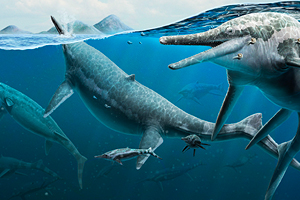
Fossil CSI: Mysterious Site was Ancient Birthing Grounds
Today's marine giants -- such as blue and humpback whales -- routinely make massive migrations across the ocean to breed and give birth. Now, new research suggests that nearly 200 million years before giant whales evolved, school bus-sized marine reptiles called ichthyosaurs may have been making similar migrations to breed and give birth together in relative safety. The findings examine a rich fossil bed in the renowned Berlin-Ichthyosaur State Park in Nevada's Humboldt-Toiyabe National Forest, where many 50-foot-long ichthyosaurs (Shonisaurus popularis) lay petrified in stone.
-

College of Mines and Earth Sciences: Highest-paying College Majors in 2022
CBS News ranked the top 60 highest-paying college majors as of 2022, and some majors from the College of Mines and Earth Sciences were mentioned!
-

How tooth isotopes help bring home unidentified soldiers
One of the keys to bringing home unidentified military remains, including POW/MIAs and the more than 81,500 soldiers unaccounted for in conflicts dating back to World War II, is using science to determine where home might be. The Forensic Identification of our Nation’s Deceased with Element Mapping, or FIND-EM, project, Gabriel Bowen, professor of geology and geophysics, and colleagues are engaged in an effort, in support of the Defense POW/MIA Accounting Agency, to develop methods that can trace the geographic origin of remains, particularly teeth.
-

University of Utah to Receive $1.4 Million in Federal Funding to Advance Used Nuclear Fuel Recycling Technology
The University of Utah announced today that it has been selected to receive $1.4 million in funding from the U.S. Department of Energy Advanced Research Projects Agency-Energy (ARPA-E). The funding is part of the ARPA-E Converting UNF Radioisotopes Into Energy (CURIE) program, which aims to develop technologies to advance used nuclear fuel (UNF) recycling, to reduce the volume of high-level waste requiring permanent disposal, and to provide safe domestic advanced reactor fuel stocks. The University of Utah will develop a pyrochemical process for efficiently converting UNF into a fuel feedstock suitable for sodium-cooled fast reactors or molten-salt-fueled reactors.
-
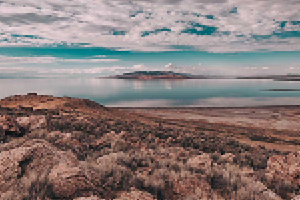
U of U Announces The Wilkes Center for Climate Science and Policy
The University of Utah announced the creation of the interdisciplinary Wilkes Center for Climate Science and Policy to promote research, study effective public policies and propose entrepreneurial business solutions to curb and combat the threats that climate change poses to human and environmental health.
-
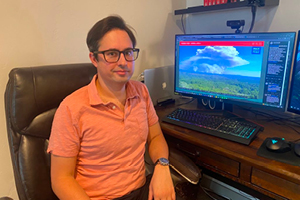
Smoky Skies Could Be Persistent Problem in Utah This Fall
Have you wondered why Utah skies are so smoky? Check out the latest KSL article that interviews Atmospheric Science assistant professor, Derek Mallia, as he explains how wildfire smoke from the west coast has caused air quality pollution. The next few days are said to bring relief from smoke but we may be in store for a smoky fall in Utah.
-
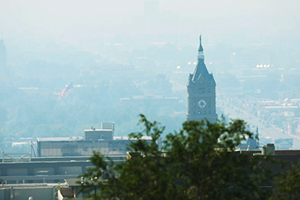
Heat Wave Sizzles Out but Is Replaced With Out-Of-State Wildfire Smoke
The heat wave is on its way out, but a new culprit has descended on Utah in its wake: wildfire smoke.Some pretty active wildfires in Idaho are to blame and the airnow.gov interactive map allows folks to see where the fires are burning that are pushing pollution levels to the extreme.While it is hazy and unhealthy out there, this bout of wildfire smoke is nothing like what descended on northern Utah last year, which logged the most unhealthy air on the planet.
-
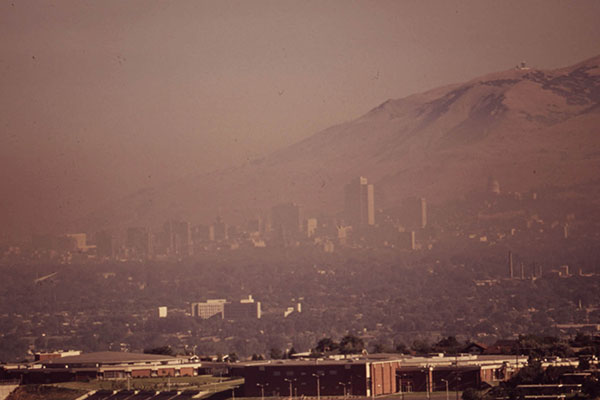
Air you can chew: The history of Utah’s air quality
Air quality concerns have stuck around for longer than Utah’s been a state, shifting as industrial technology, and the climate, has changed. Research by atmospheric sciences research assistant professor Logan Mitchell traces the history of air quality in Utah from the mid-19th century to the future.
-

How meteorologist Matt Johnson went from the U to KSL-TV
A broadcast meteorologist does much more than stand between a green screen and a camera. They stand between the data-driven world of meteorological science and the public. AtTheU spoke with Matt Johnson, an atmospheric sciences alum and meteorologist for KSL, to hear how his studies at the U prepared him for his current role.
-
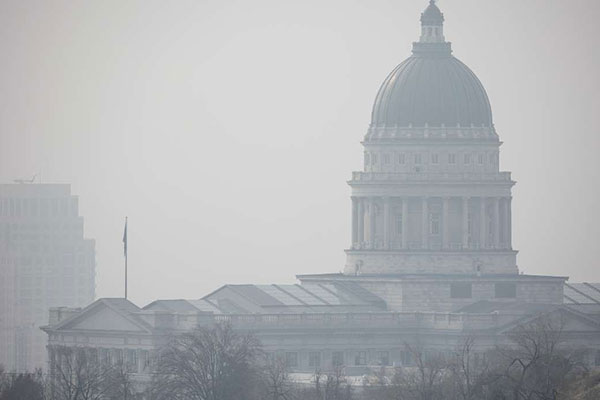
Trying to escape air pollution? Here’s how you can do more than just stay inside
Like 25 million other Americans, Daniel Mendoza, a research assistant professor of atmospheric sciences, suffers from asthma. As part of his research, Mendoza focuses on the air quality of office buildings, schools, and homes. His work shows decrease in air quality indoors as air quality worsens outside; read more about his work, and how you can improve the air in your home, on this article featured on KSL!
-
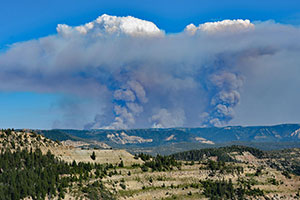
Western wildfire smoke plumes are getting taller
In recent years, the plumes of smoke crawling upward from Western wildfires have trended taller, impacting air quality over a wider area; the likely cause is climate change. Atmospheric sciences researchers Kai Wilmot, Derek Mallia, Gannet Hallar, and John Lin modeled plume activity for around 4.6 million smoke plumes to assess trends in smoke plume height.
-
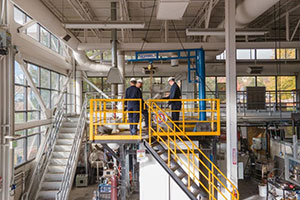
Manufacturing Process Innovations: A “Bessemer Moment” For Titanium?
Titanium is a strong, lightweight material resistant to corrosion and high temperatures — but it’s expensive to make and therefore rare in consumer products. Professor of metallurgical engineering Z. Zak Fang has developed a process that drastically decreases the time, cost, and environmental impact of titanium production under the sponsorship of the DOE.
-

New grant explores formation of cloud-generating particles
Gannet Hallar, professor of atmospheric sciences, is the principal investigator on a new research project using U.S. Department of Energy measurements to learn about how some of the cloud-forming aerosol particles in the atmosphere form. The study is funded by a $720,000 grant from the DOE.
-
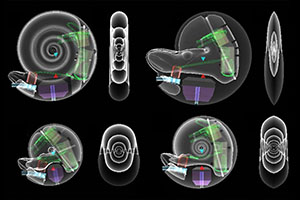
Robotic ammonites recreate ancient animals’ movements
In a university swimming pool, atmospheric scientists Kathleen Ritterbush and David Peterman watch carefully as a coiled shell, a robotic ammonite, is released from a pair of metal tongs. The shell begins to move under its own power, giving the researchers a glimpse into what the oceans might have looked like millions of years ago when they were full of these animals. Read more about their research here!
-
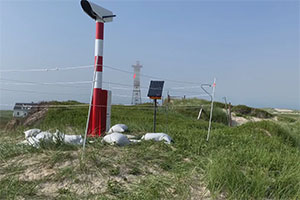
Scientists descend on Sable Island for massive study of fog
After two years of prep work, a team of international scientists, including U research associate professor of atmospheric sciences Sebastian Hoch, are deploying instruments on Sable Island, CA for an intensive study of marine fog. Home to feral horses and the world’s biggest breeding colony of grey seals, Sable Island is the foggiest place on Earth in the summer. Read more here!
-
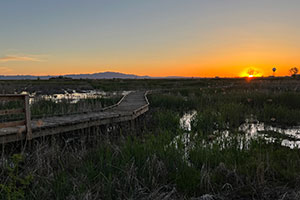
The future of Great Salt Lake
University of Utah president Taylor Randall and Brad Wilson, Speaker of the Utah House of Representatives, met with legislators, Great Salt Lake advocates, and scientists, including Chair of the Department of Atmospheric Sciences Kevin Perry, to discuss how to help save the lake, which reached its lowest recorded level last year.
-

Explore the geology of the Tour de France
Did you know that the Tour de France takes bicyclists past dead volcanoes and dinosaur fossils? The website Geo-Tour de France is now live to serve sports editors, cycling commentators, and bicycle racing fans. It describes the natural décor of each stage of the Tour de France, with contributors from across the globe, including Peter Lippert, associate professor of geology and geophysics at the University of Utah.
-
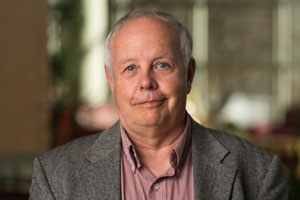
Dr. Kip Solomon appointed Francis Brown Presidential Endowed Chair
Distinguished professor of geology and geophysics Kip Solomon has been appointed to be the next Francis Brown Presidential Endowed Chair, July 1, 2022-25. This position is one of the University of Utah’s most meaningful and prestigious honors given its legacy and connection to Dean Francis Brown. Congratulations, Kip!
-
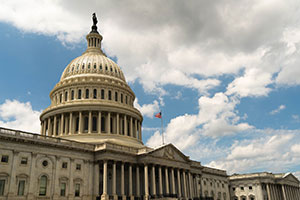
U professors impact federal policy through D.C. fellowships
One of the latest University of Utah researchers to head to the corridors of power in Washington, D.C., to join in the policymaking process isn’t a political scientist or lawyer — he’s a geoscientist. Sudeep Kanungo, an adjunct associate professor of geology and geophysics and a research associate in the U’s Energy & Geoscience Institute, is one of the American Association for the Advancement of Science’s Science & Technology Policy Fellows this year.
-
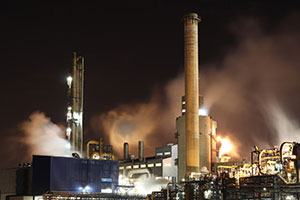
New tool shows air pollution’s path
On June 13, 2022, the Environmental Defense Fund unveiled Air Tracker, a first-of-its-kind web-based tool that allows users to plot the likely path of air pollution. Run on real-time, trusted scientific models and developed in partnership with the University of Utah and the CREATE Lab at Carnegie Mellon University, Air Tracker helps users learn more about the air they’re breathing, including pollution concentrations and its potential sources.
-

Mark Lowen reviews dinosaur movie scenes for Vanity Fair
How realistic are Hollywood’s dinosaurs? Associate professor of geology and geophysics Mark Loewen sat down with Vanity Fair to discuss the accuracy (and inaccuracy) of dinosaur depictions in movies ranging from Fantasia (1940) to Jurassic World: Fallen Kingdom (2018). For example, the Spinosaurus that battles with T. Rex in Jurassic Park 3 actually lived in aquatic environments and never would have encountered the dinosaur!
-

Bob Smith Awarded for 65 Years of Work and Research for Yellowstone National Park
Professor emeritus of geology and geophysics Robert “Bob” Smith has been awarded in appreciation for his dedicated geologic work and research on Yellowstone National Park for 65 years. He was awarded on May 15th, 2022 by the Program Committee of the 15th biennial scientific conference on the Greater Yellowstone ecosystem.
-
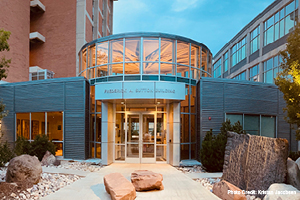
College of Mines and Earth Sciences to merge with College of Science
The University of Utah College of Mines and Earth Sciences will merge with the College of Science beginning July 1, 2022, a move that will unite well-funded programs, build synergy and cooperation between faculty and create a much stronger base for science and mathematics education at the U. Deans Darryl Butt of the College of Mines and Earth Sciences and Peter Trapa of the College of Science have worked with university administration and members of both colleges to plan the details of the merger. The College of Mines and Earth Sciences will retain its name and identify as a unit of the College of Science and all faculty, students, buildings and research programs in both colleges will continue in the combined unit. “Both of these colleges are leaders in student enrollment and research, providing valuable direction on some of the most important issues we face today,” said U president Taylor Randall. “I am confident this union will elevate both programs and provide more opportunities for collaboration and student access to classes.” “Given the incredibly strong connections and research collaborations between the two colleges already, this proposed merger brings a huge number of opportunities for students and faculty,” said William Anderegg, associate professor in the College of Science’s School of Biological Sciences. “The merger opens doors to new educational programs, student research opportunities and research avenues that should elevate the U’s prominence and impact.”
-
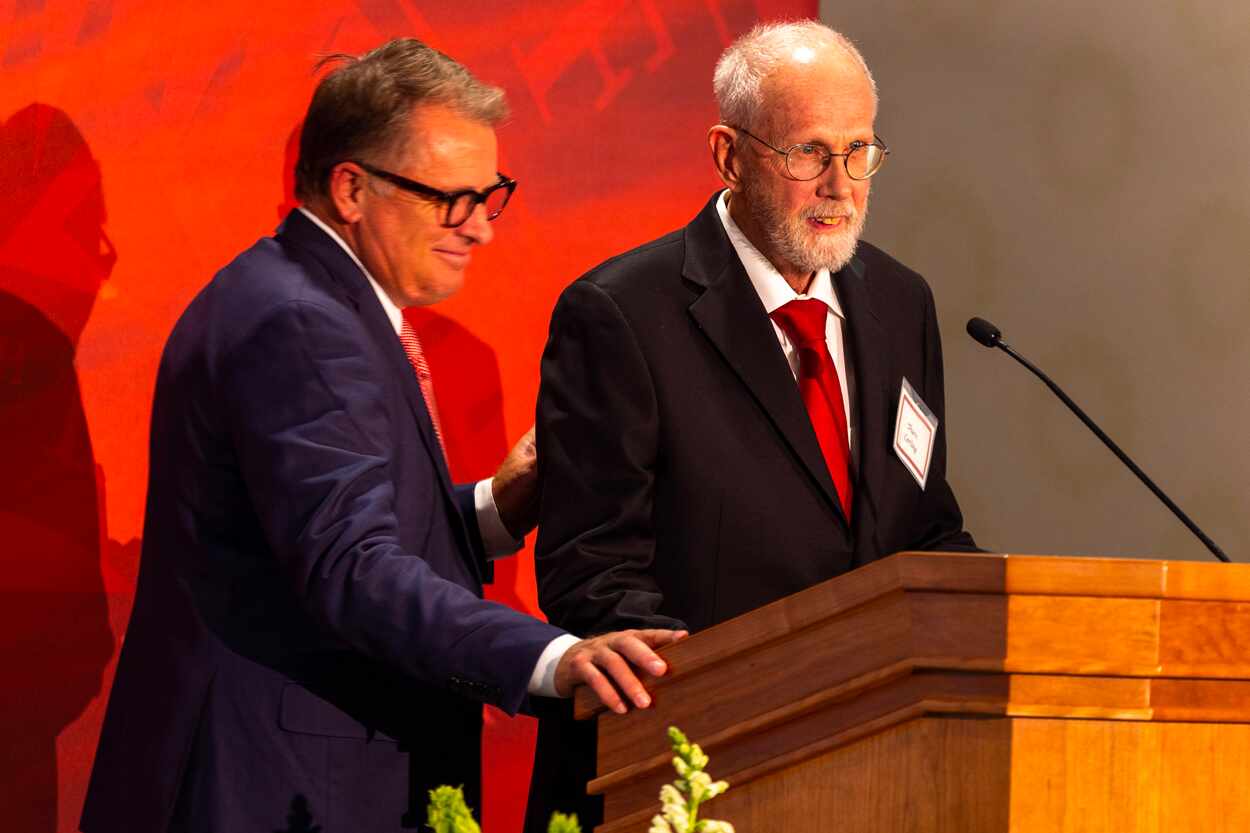
Thure Cerling awarded U's Rosenblatt Prize for Excellence
Thure E. Cerling, department chair of the Department of Geology & Geophysics, Francis H. Brown Presidential Chair, Distinguished Professor of Geology and Geophysics and Distinguished Professor of Biology is the 2022 recipient of the Rosenblatt Prize for Excellence. The Rosenblatt Prize is the University of Utah’s highest faculty accolade and is presented annually to a faculty member who transcends ordinary teaching, research, and administrative efforts. Congratulations to Dr. Cerling!
-
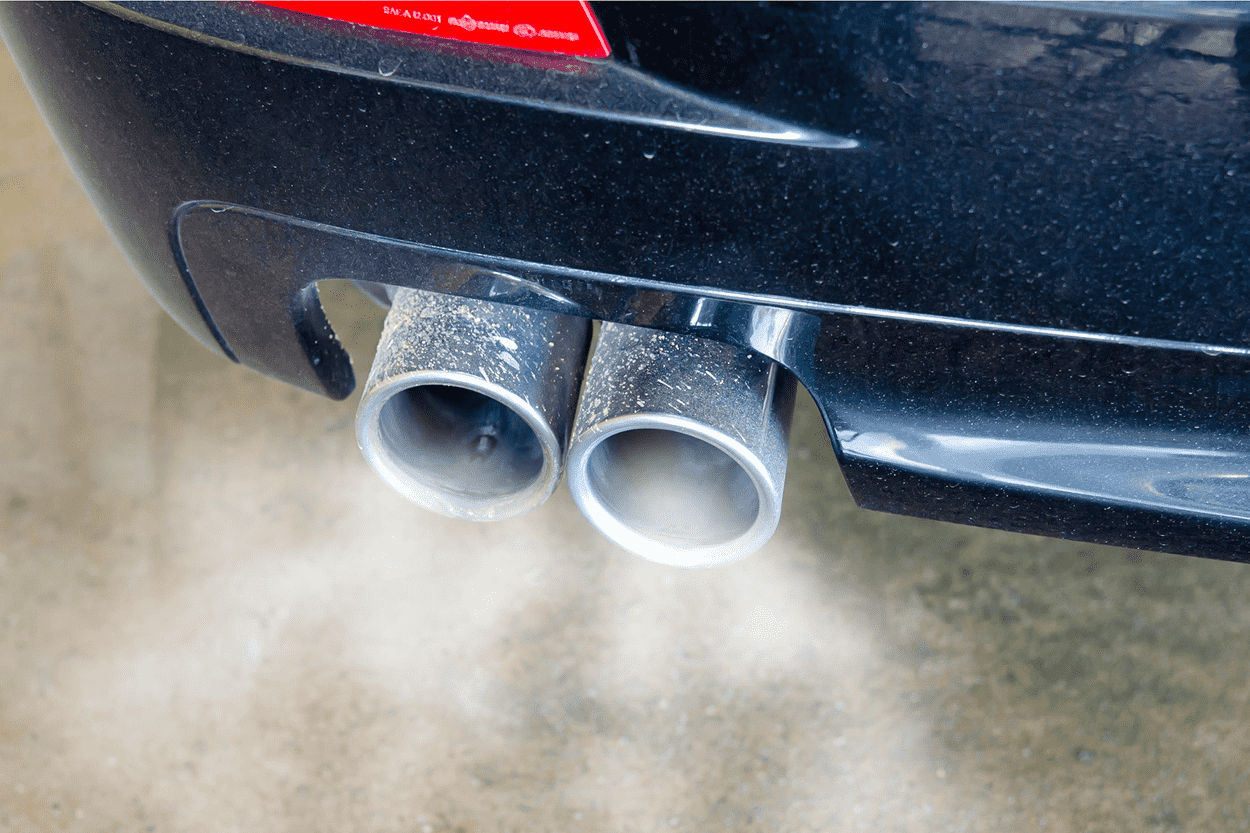
Campaign reduces car idling at two elementary schools
An anti-idling campaign at two Salt Lake County elementary schools was effective in reducing idling time by 38%, and an air monitoring experiment found that air quality around schools can vary over short distances. These findings, published in the journal Atmosphere, can help schools and school districts along the Wasatch Front plan to protect students, staff and the community from idling-related air pollution.
-
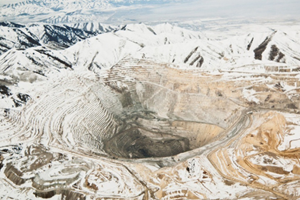
Mining the West: Primary Elements
The digital exhibit at the Marriott Library, "Mining the West: Primary Elements," features Rajive Ganguli and Michael Nelson, both professors of mining engineering, in "Voices of the Field." Their "Profile of Bingham Canyon Miners" highlights statistical data that examines different aspects of the miners that work and have worked in Bingham Canyon Mine.
-
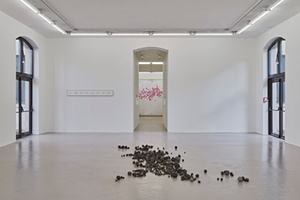
Here and Elsewhere Exhibition
The “Here and Elsewhere” exhibition, located at the Institut d’ art contemporain, Villeurbanne, France, was created in collaboration with artist Irene Kopelman and University of Utah Professor Marjorie Chan. The purpose of this exhibit was to draw a connection between a European contemporary art museum with the wilderness of Utah by using fired clay rocks, also called Moqui marbles.
-

Cover of SEG Discovery and the Story Behind It
The Cover of SEG Discovery 129 (Spring 2022) featured Wesley Hall, one of the students that participated in one of the SEG Foundations International Field Course Series in Chile, led by University of Utah Professor Erich Petersen and New Mexico School of Mines Professor William Chávez. The photo was taken by Nick Kerr, one of our undergraduates in Geology in 2010, who also participated in the trip. We are thankful to have them in our college!
-
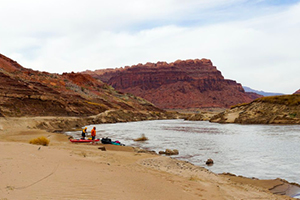
Deltas of sediment are pushing into Glen Canyon as Lake Powell disappears
The transition zone between flowing river and reservoir is what scientists refer to as the delta, and it’s migrating toward the Glen Canyon Dam as Lake Powell has dropped to record low levels. Professor Cari Johnson, her students, and master’s student Hannah Hartley are studying how deltas of sediments are impacting the reservoir. Lake Powell’s level has dropped from its full capacity in 1999 to 23% of its original capacity.
-

Dr. Kip Solomon Awarded Distinguished Research Award
Congratulations to Dr. Kip Solomon. He has been named a recipient of the U of U 2021-2022 Distinguished Research Award! Dr. Solomon’s research includes the use of environmental tracers to evaluate groundwater flow with the aim of sustainable management of fresh-water resources. He constructed and currently operates one of only a few labs in the world that measures noble gases in groundwater. His research results have been documented in more than 150 journal articles, book chapters, and technical reports. We are so grateful to have Dr. Solomon part of our college.
-

Exposed sediments reveal decades of Lake Powell history
Usually when a geologist walks up to a sedimentary rock outcrop and starts scanning the layers of sand, mud, and silt now turned to rock, they’re looking through millions of years of deep time to deduce what happened in that place in the world over many thousands of years to create that particular rock. But when United States Geological Survey scientist Scott Hynek walked up to an outcrop of sediment in Calf Canyon, near Utah’s Lake Powell, he saw a thick layer of sand and thought “Crikey! That’s 1983!” For Cari Johnson, U professor of geology and geophysics, USGS scientists Hynek and Casey Root, and Jack Schmidt of Utah State University, the exposed formations in Calf Canyon provide an incredible opportunity.
-
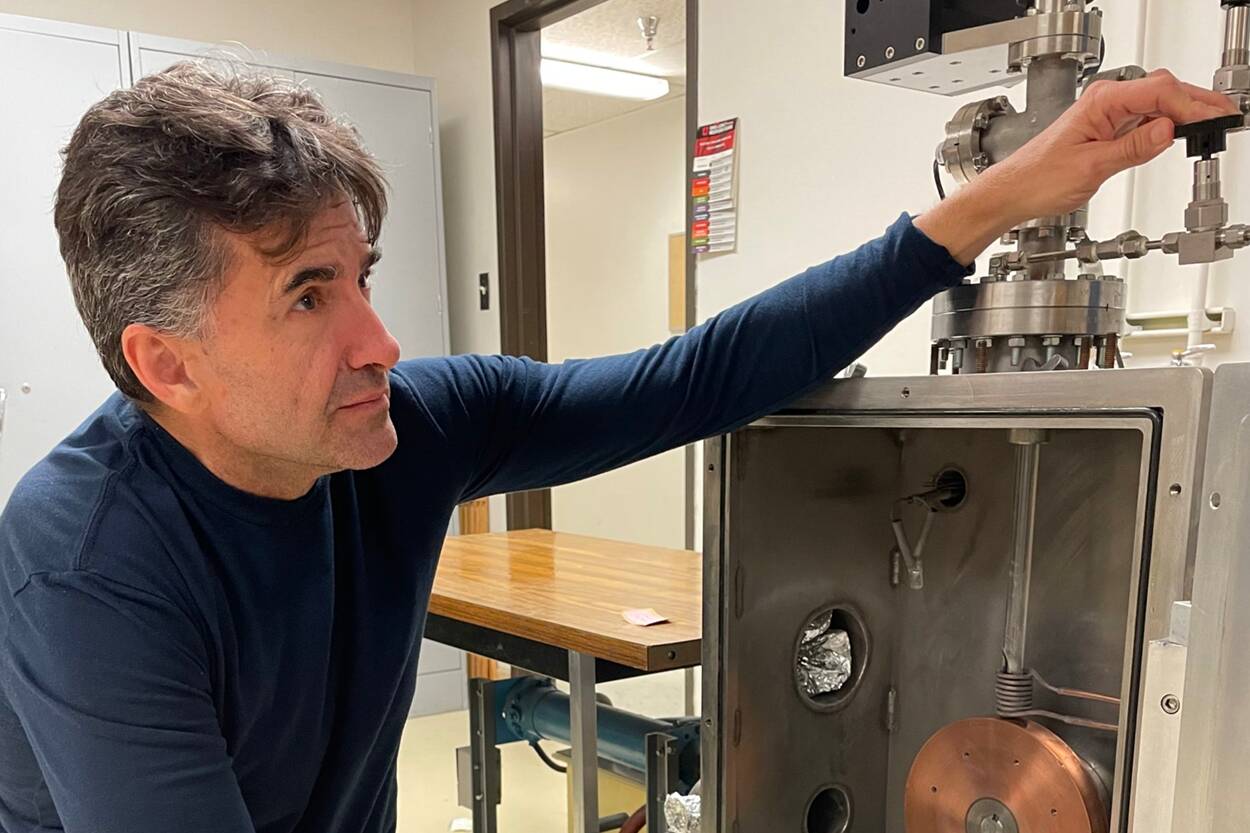
A Terrible Thing to Waste
A major environmental concern about the use of nuclear reactors is what’s left behind — the nuclear waste from spent fuel rods. Where to dispose of this waste has been the source of much controversy. But instead of just burying the spent fuel rods, what if you could somehow recycle them to be used again? University of Utah engineering researchers will be working with a team from the Idaho National Laboratory (INL) to develop an innovative yet simple process of recycling metal fuels for future advanced nuclear reactors. Leading the University of Utah team is Michael Simpson, professor in the Department of Materials Science and Engineering.
-
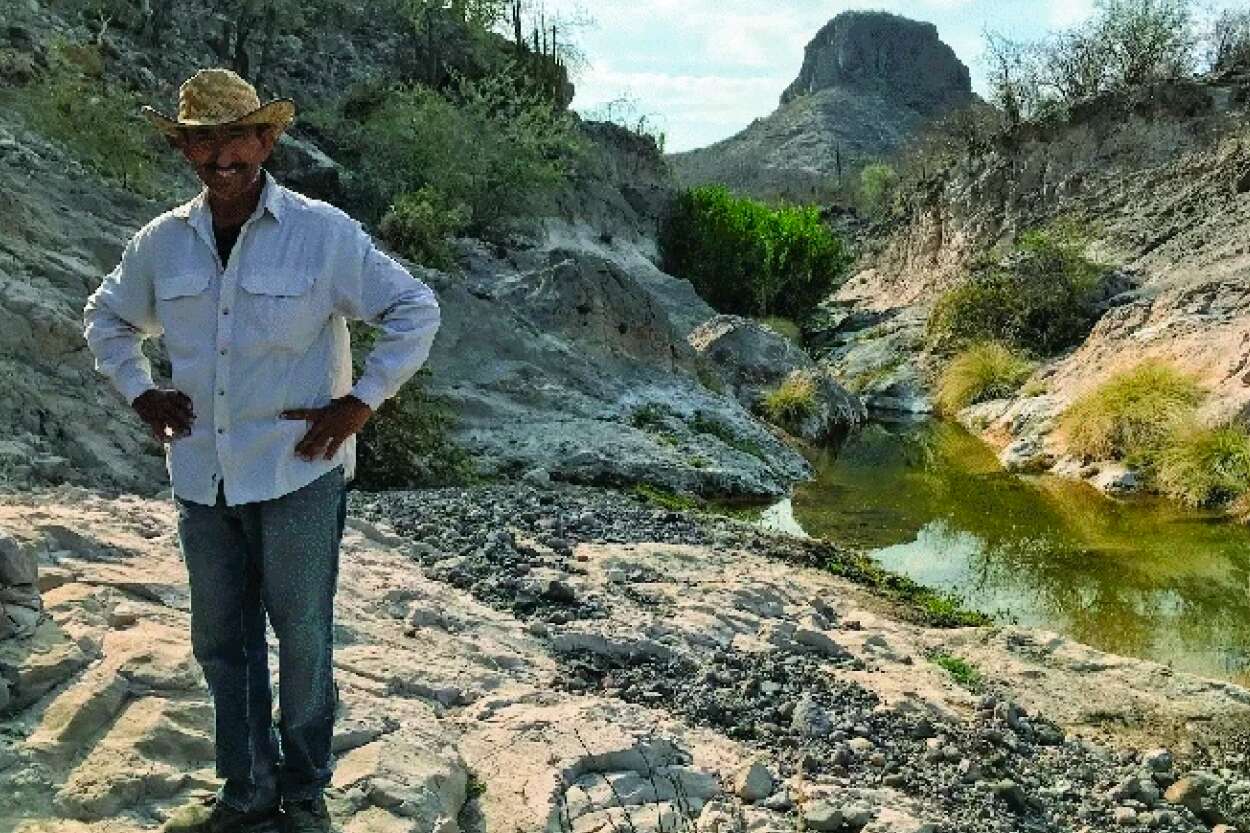
Read alumni Jory Lerback and Professor Brenda Bowen's article in Sustainability Science publication
Congratulations to Geology and Geophysics PhD alum Jory Lerback and Professor Brenda Bowen on their publication in Sustainability Science, "Development of a graphical resilience framework to understand a coupled human-natural system in a remote arid highland of Baja California."
-
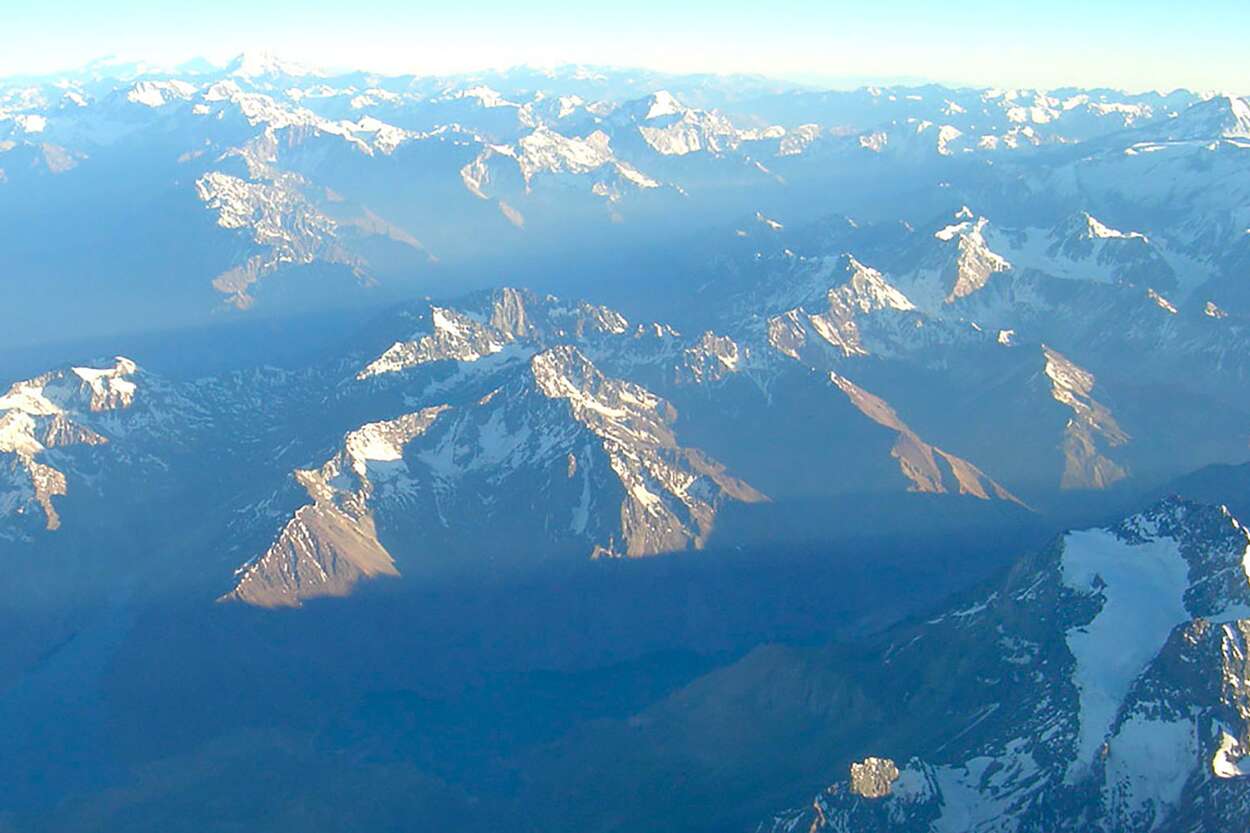
A surprisingly soft mineral may control how Earth recycles rocks
Here on the Earth’s crust, we’re part of a conveyor belt system called plate tectonics where old crust at the margins of oceans is shoved back underground beneath continents, into the mantle. As that crust goes deeper into the Earth, some of the minerals in the rocks change under the high temperatures and pressures of the mantle. New research from Department of Geology and Geophysics Associate Professor Lowell Miyagi and colleagues finds that one of these mantle minerals, davemaoite, is among the weakest in the Earth’s interior.
-
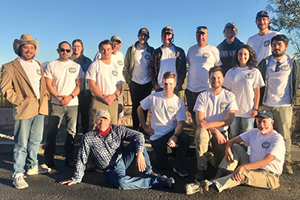
Professor Erich Petersen in Michael J Fitzgerald Student Mapping Course
Erich Petersen, professor in Geology and Geophysics, helped teach twelve students and young professionals during the second Michael J. Fitzgerald Student Mapping Course for the Society of Exploration Geophysicists (SEG) November 6-13, 2021. The field course occurred at the Late Cretaceousage Copper Flat porphyry-breccia system in New Mexico and involved mapping rock types associated with the system.
-

Measuring the tempo of Utah’s red rock towers
New research conducted by geology and geophysics associate professor Jeffrey Moore and doctoral student Riley Finnegan shows that the red rock towers found in Southern Utah and throughout the Colorado Plateau are in constant motion, vibrating with their own signature rhythms as unique as their dramatic profiles against the depth of the blue desert sky.
-

Kevin Mendoza recognized as a National Association for Geoscience Teachers Outstanding Teaching Assistant
Kevin Mendoza, a PhD student in geology and geophysics, was recently recognized as a National Association for Geoscience Teachers (NAGT) Outstanding Teaching Assistant. The award honors his dedicated and innovative teaching contributions in geology. Kevin is the first student from Utah to receive this award. Congratulations to Kevin!
-
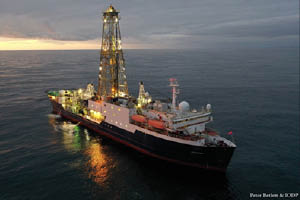
U geoscientist sails on Arctic research cruise
Pilot whales, northern lights, breakfast every day overlooking the ocean — it sounds like a dream Scandinavian cruise, but not one you’ll find on any travel site. In 2021, geoscientist Sarah Lambart embarked on a scientific mission to explore the geologic history that shaped the continents as we see them today. That mission took her past the Arctic Circle aboard a research vessel equipped with a drill rig that pulled up sediment and rock cores from the deep ocean floor, giving Lambart and her colleagues an insight into volcanic activity on Earth 60 million years ago. Read the full story here!
-

Possible chemical leftovers from early Earth sit near the core
Let’s take a journey into the depths of the Earth, down through the crust and mantle nearly to the core. We’ll use seismic waves to show the way, since they echo through the planet following an earthquake and reveal its internal structure like radar waves. Down near the core, there are zones where seismic waves slow to a crawl. New research from the University of Utah finds that these enigmatic and descriptively-named ultra-low velocity zones are surprisingly layered. Modeling suggests that it’s possible some of these zones are leftovers from the processes that shaped the early Earth—remnants of incomplete mixing like clumps of flour in the bottom of a bowl of batter. “Of all of the features we know about in the deep mantle, ultra-low velocity zones represent what are probably the most extreme,” says Michael S. Thorne, associate professor in the Department of Geology and Geophysics. “Indeed, these are some of the most extreme features found anywhere in the planet.”
-
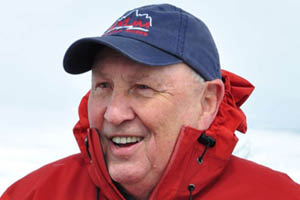
Professor Bob Smith awarded Best Paper of the Year
Congratulations to professor emeritus of geology and geophysics Bob Smith! He has been chosen as the 2021 recipient of the Colorado Scientific Society’s Past Presidents’ Award for Best Paper of the Year, honoring his work studying the anatomy of Old Faithful and the Yellowstone volcanic system.
-
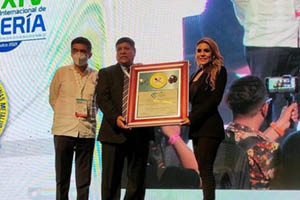
Dr. Jose Parga Recognized With National Award in Education
University of Utah alumnus Dr. Jose Parga has been recognized in Mexico with the National Award in Education from the Association of Mining Engineers, Metallurgists, and Geologists of Mexico! Dr. Parga received his Ph.D in Metallurgical Engineering at the University of Utah in 1987 and is on the faculty of the Technological Institute of Saltillo, where he and his students have been recognized for numerous achievements. The National Award in Education celebrates excellence in mining engineering and metallurgy teaching. Congratulations to Dr. Parga!
-
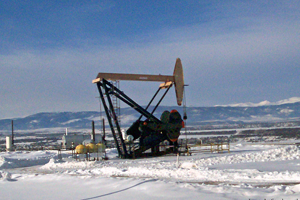
Methane emissions: falling, but leaking
As important as emissions of the greenhouse gas methane are in the climate conversation, factoring prominently in the recent COP26 conference in Glasgow, researchers have painfully little long-term data on emissions from wells and other oil and gas infrastructure. That makes answering questions about the sources and magnitudes of emissions, as well as year-to-year trends across an entire production region, difficult. Answers are starting to come from Utah’s Uinta Basin, home to possibly the longest continuous methane monitoring site in an oil and gas-producing region. Since 2015, researchers have been tracking emissions from oil and gas wells and report that, over that time, emissions from the region have fallen by half. But more analysis of leak rates shows that the oil and gas industry has a ways to go in stopping methane leaks, which impact the climate and human health and can impose costs on Utah’s economy. “Our work in the Uinta Basin shows that the methane emissions can change over multiple years,” says John Lin, professor of atmospheric science at the University of Utah, “and it is important to bring a long-term perspective and monitor these emissions over multiple years as well.” “The earth has only one atmosphere,” says research associate professor Seth Lyman, director of the Bingham Research Center at Utah State University’s Uintah Basin campus, “and emissions in one area can impact air quality and climate across the globe. Oil and natural gas facilities are not evenly distributed around the state or around the world, but climate impacts from fossil fuels are not dependent on the location of emissions.” The study is published in Scientific Reports and is funded by the National Oceanic and Atmospheric Administration (NOAA) and a subcontract from the University of Arizona. Monitoring in the Uinta Basin Methane is a potent greenhouse gas, with around 85 times more global warming potential than carbon dioxide over the first 20 years it’s in the atmosphere. Methane has a tremendous potential to absorb infrared energy, which it then re-directs back to the Earth’s surface, thereby trapping the heat and warming the planet. Methane is the “gas” part of oil and gas production. Because it’s hard to keep every component of the gas production process airtight, methane can leak from wells, pipelines—anywhere along the way. It can also react in the atmosphere to form ozone, which is where Lin and his colleagues from the University of Utah, Utah State University and West Texas A&M University come into the story. In the early 2010s, researchers were studying high levels of wintertime ozone pollution in the Uinta Basin. One study involved flying an aircraft-based sensor over the basin, home to around 10,000 oil and gas wells. Aircraft-based measurements are good, but they’re only a snapshot of a moment in time. “I wanted to compare estimates from ground-based observations against the aircraft estimates and see how the emissions change over multiple years,” Lin says. In 2015, with funding from NOAA, the team installed the first of what would become three sensors in the basin. It was good timing—after years of booming oil and gas production, oil prices began to fluctuate and fell off by the 2020s, affecting production in the region and giving the researchers a glimpse into how economic forces and methane emissions were related. How and why emissions fell Between 2015 and 2020, the researchers observed, methane emissions in the Uinta Basin approximately halved. Natural gas production also fell to around half of its peak, as fossil fuel prices collapsed after 2014. This initial result is good news—less methane in the air is good for the climate and for human health. But the researchers also noted that the amount of methane still leaking from the remaining wells in 2020 was about six to eight percent of the produced natural gas, about the same as it was in 2015. “This means that the leak rate has stayed at a constant—albeit high—rate, even with decreases in natural gas production,” Lin says. This result was surprising because previous research had suggested that lower-production wells would leak a higher proportion of methane. “This may account for the high leak rate in general in the Uinta Basin since the average Uinta well produces less gas compared to many other counterparts around the U.S.,” he says. “However, it was nonetheless surprising that the leak rate did not increase as the Uinta wells decreased in production.” The researchers ruled out regulation as contributing to the emissions decline since Environmental Protection Agency regulations in the past few years applied only to new wells. Surveys of some of the companies in the Uinta Basin did show that one company voluntarily took action to detect and repair leaks, but the extent of such voluntary action is unknown. What methane leaks cost us So if methane emissions decreased with a drop in gas production, does that mean emissions might go up if production rebounds? Maybe, Lin says, but he adds that leak detection and repair technologies have been improving in recent years, so the methane emissions could even decrease in the future as production increases. “This will depend on decisions made by individual companies, as well as on changes that have occurred or that may occur in the regulatory landscape,” says Lyman. Just as economic forces impacted oil and gas production and methane emissions in recent years, continued leaks can impose their own expenses, particularly on Utah’s economy. Lyman says that the majority of crude oil processed in Utah’s refineries comes from the Uinta Basin. Beyond the climate implications, leaking methane is wasted energy (about three to five percent of all energy produced in the basin, the study estimates), which increases costs for companies. Also, leaking methane impacts Uinta Basin air quality. “Besides the obvious (and more important) health impacts to residents of the Basin, air quality problems lead to increased regulation of oil and gas development, which increases costs, and those costs are passed on to consumers,” Lyman says. Hopefully, this study inspires other oil and gas regions in the U.S. and around the world to conduct their own continuous monitoring, says Erik Crosman, assistant professor at West Texas A&M University. “We need a more detailed understanding of how methane emissions are evolving,” he says, “and observations like those we conducted in the Uinta Basin help toward filling in those gaps.” Find the full study here. Ryan Bares, Benjamin Fasoli and Maria Garcia of the U’s Department of Atmospheric Sciences, were also co-authors on the study. Methane emissions: falling, but leaking by Paul Gabrielsen, science writer, University Marketing and Communications https://attheu.utah.edu/facultystaff/uinta-basin-methane/ Jake Luman
-

Being Human in STEM
The goal of the Being Human in STEM class is to create a space for dialogue between STEM students and STEM faculty to investigate together the theme of diversity and climate within STEM. The course combines academic inquiry and individual stories to understand how students’ identities shape their experience in STEM.
-
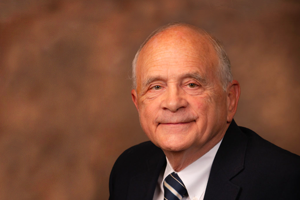
Jan Miller Named TMS Fellow
Congratulations to metallurgical engineering Distinguished Professor Jan D. Miller, who was chosen to receive The Minerals, Metals and Materials Society (TMS) Fellow Award for the Class of 2022 for “outstanding contributions to the practice of metallurgy, materials science, and technology.” The award includes a lifetime membership to the society and is its top honor.
-

Humans of the U: Srabani Karmakar
“After a long quarantine, we’re finally attending in-person classes. For international students who moved here during the pandemic, as I did, it’s been challenging learning to adjust to American culture. For South Asians, our culture is so different from westerners. Our values are the same, but our thought processes are so different. Immigrant students are a big reason why America has such a versatile culture—people from different countries can learn a lot from each other. That’s been true for me, a Bangladeshi girl. That’s why the last two years of grad school were memorable—I learned so much from every person I met.
-
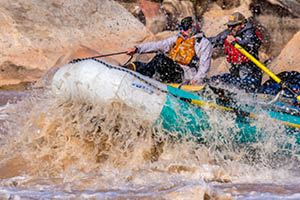
CMES Professors Brenda Bowen, and Cari Johnson Talk Geology in the Salt Lake Tribune
Dr. Brenda Bowen, a professor of geology and geophysics and the director of the Global Change and Sustainability Center at the U, and Dr. Cari Johnson, a professor of geology and geophysics, are part of the ongoing Returning Rapids Project studying the rapidly changing Colorado River. As Lake Powell, the second-largest reservoir in the United States, reaches record-low water levels, it is revealing previously hidden ecological, archaeological, and historical resources in Cataract Canyon, from renewed plant growth to prehistoric rock art. Dr. Bowen is analyzing the chemical makeup of reservoir deposits; last year, Dr. Johnson analyzed reservoir sediment in Waterhole Canyon.
-

Dr. Wang and Dr. Mendoza Are Participating in SPUR
Research professor of metallurgical engineering Xuming Wang and research assistant professor of atmospheric sciences Daniel Mendoza will participate in the Summer Program for Undergraduate Research (SPUR) in 2022! SPUR is an intensive 10-week research experience through the Office of Undergraduate Research at the U. Students work with a faculty mentor over the summer on a specific research topic, gaining experience in their field and forming lasting relationships with faculty and peers. Dr. Wang will serve as a faculty mentor focusing on the production of calcium carbonate through carbon dioxide mineralization. Dr. Mendoza will serve as a faculty mentor through Project HAPPIEST (Health, Air Pollution and Population Initiative in Education and Science Training), a program that runs in collaboration with SPUR with an added focus on environmental health, particularly as it impacts underrepresented groups and low-income communities. His focus will be on the findings and implications of air quality monitoring platforms on TRAX.
-

Roman Noblewoman’s Tomb Reveals Secrets of Ancient Concrete Resilience
Over time, concrete cracks and crumbles. Well, most concrete cracks and crumbles. Structures built in ancient Rome are still standing, exhibiting remarkable durability despite conditions that would devastate modern concrete. One of these structures is the large cylindrical tomb of first-century noblewoman Caecilia Metella. New research shows that the quality of the concrete of her tomb may exceed that of her male contemporaries’ monuments because of the volcanic aggregate the builders chose and the unusual chemical interactions that aggregate had with rain and groundwater over two millennia.
-
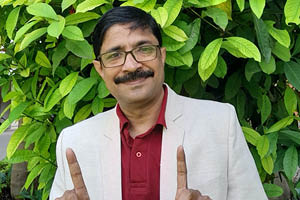
Satyam S. Sahay elected as a 2021 Fellow of Indian National Academy of Engineering
University of Utah alum Dr. Satyam Sahay has been elected as a 2021 Fellow of The Indian National Academy of Engineering (INAE) in recognition of his distinguished contributions to engineering and technology. The Fellowship, effective from Nov. 1, 2021, will be virtually conferred to him during the INAE Annual Convention in Dec. 2021.
-
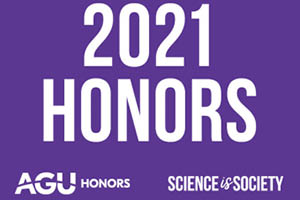
Paul Brooks elected as a Fellow of the American Geophysical Union
Congratulations to professor of geology and geophysics Paul Brooks, who has been elected a 2021 Fellow of the American Geophysical Union! AGU is an international, nonprofit organization of scientists dedicated to sustainable and innovative discoveries across the earth sciences. Less than 0.1% of AGU members are elected as Fellows, a group recognized for their outstanding achievements and leadership in the geosciences.
-
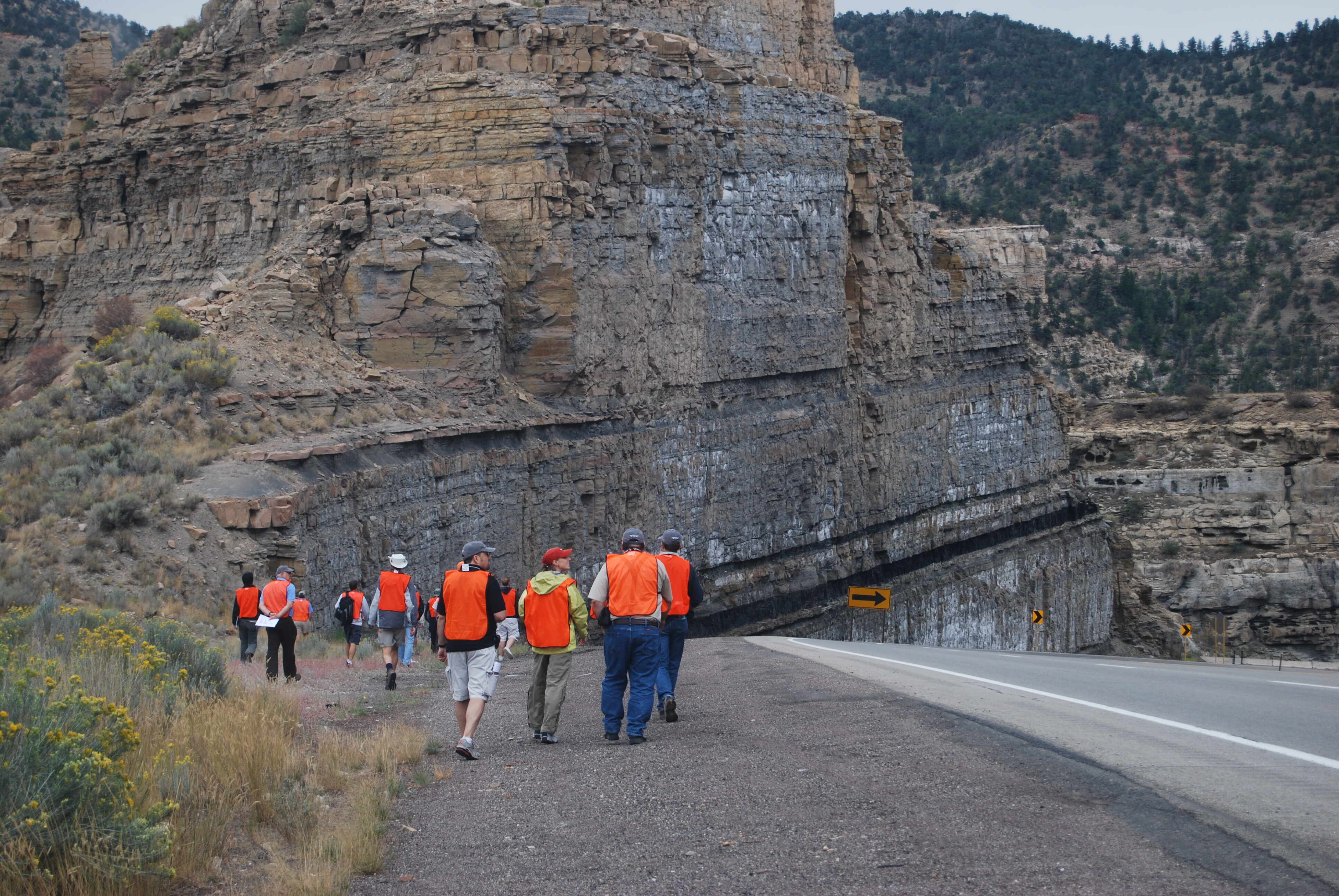
U Researchers to Study Potential of Uinta Basin Mineral Resources With $1.5M Grant
The United States Department of Energy has awarded the University of Utah $1.5 million to study the potential of transforming coal-associated mineral resources in Utah and western Colorado’s Uinta Basin region into high-value metal, mineral and non-fuel carbon-based products. Coal has historically been used for combustion and energy generation, but may additionally host critical minerals and rare earth elements that have been overlooked and are valuable non-fuel products in our modern society.
-
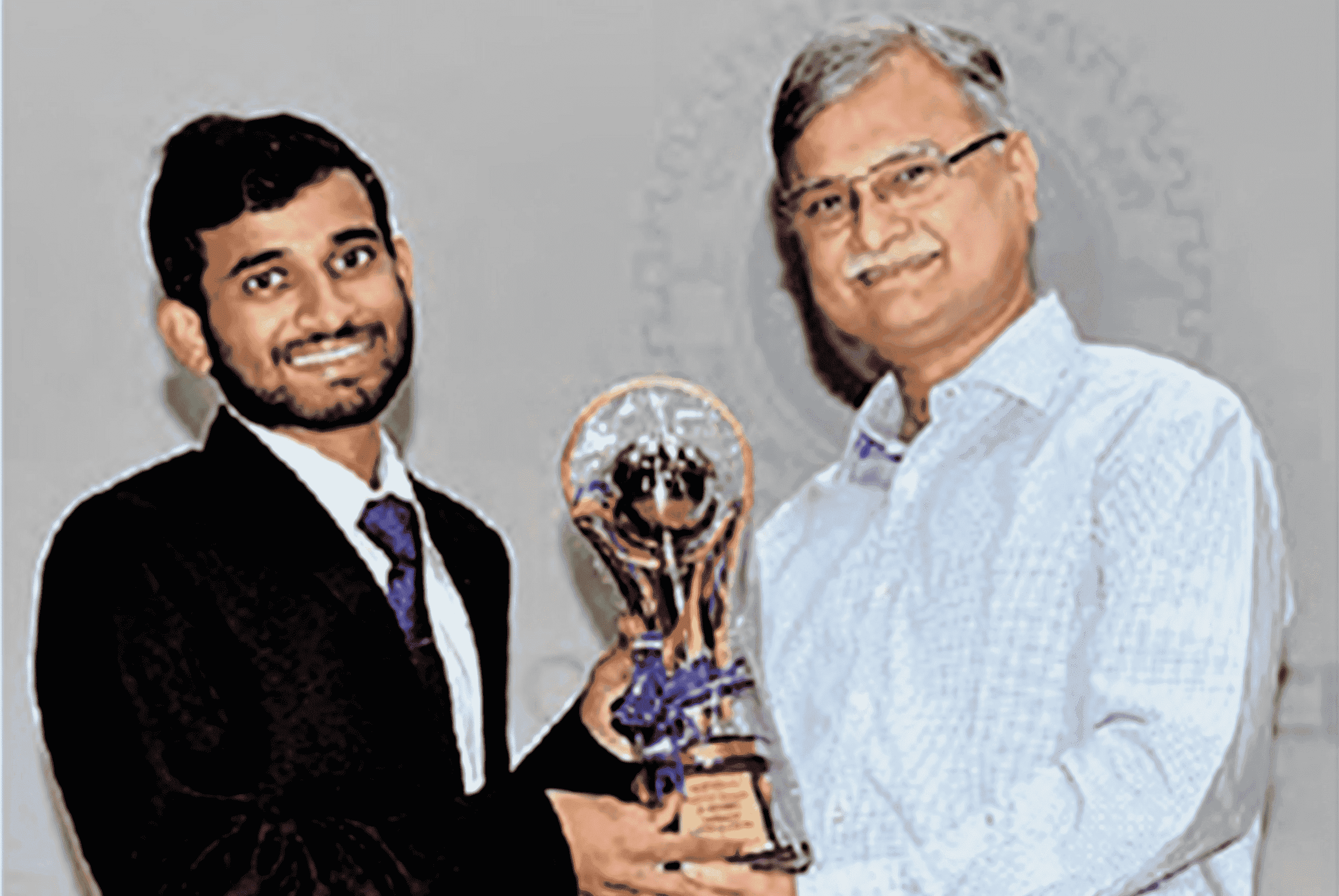
The Sky is the Limit – Beating the Odds: An Interview with Rahul Kumar
Nothing is impossible. Perhaps no one exemplifies this timeless adage more than Rahul Kumar, the son of a migrant worker from Bihar, who went on to become a Gold Medalist from IIT Roorkee and is now on his way to the USA to do his PhD at the University of Utah. The road starting from the humblest of beginnings to becoming one of India’s brightest young scholars has not been easy. Rahul has faced financial, medical and countless social hardships to be where he is today. What is most admirable is that even after achieving so much in such a short time, he hasn’t lost his humility. Corporate Citizen had a heartfelt conversation with Rahul, where he opened up about his inspirational journey to the top, the lessons he learnt on the way, and his plans to give back to society. This is the inspiring story of how a migrant labourer’s son went from abject poverty to becoming an IIT Gold Medalist and a research fellow at the University of Utah, USA.
-
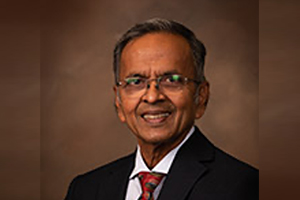
Remembering Raj Rajamani
It is with deep sadness we share with you the news of the sudden passing away of our beloved and distinguished colleague and friend, Professor Raj K. Rajamani in the late evening of Thursday, August 12, 2021. Raj, as he was affectionately called, was an outstanding intellectual mind. He was a highly skilled scientist, an excellent engineer, a dedicated philanthropist, and above all, one of the nicest, compassionate, thoughtful, and humble persons you would ever meet.
-
Utah is ready for its ‘dark sky’ moment as tourists leave the crowds behind to see the Milky Way
On a cloudless night, how much of the sky can you see? For Utahns and tourists who seek out the state’s designated “dark sky” locations, quite a lot. “It never ceases to amaze me, when I’m down in Canyonlands or Capitol Reef, when you can see the Milky Way and you really see just the incredible majesty of space and the sky,” said Lindsie Smith, director of the Salt Lake County-operated Clark Planetarium.
-
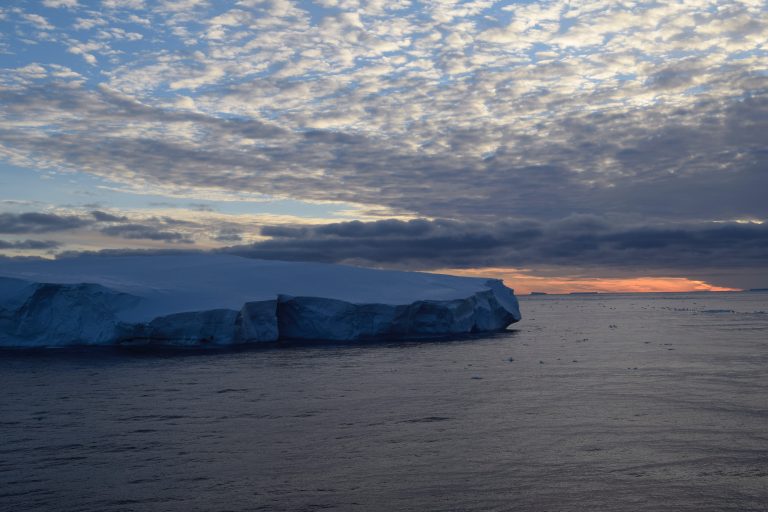
U scientists to study Southern Ocean cloud formation with $526K grant
Thanks to a $526,000 grant from the U.S. Department of Energy, University of Utah atmospheric scientists Jay Mace and Gannet Hallar will study data from the Southern Ocean, which surrounds Antarctica, as part of ongoing efforts to understand how ocean processes impact clouds in that relatively untouched part of the planet.
-

Heat, air pollution and your health
Hazy skies during the summer months should be as concerning as they look. The lingering hue could be heat, elevated ozone air pollution, or particulate pollution related to wildfire smoke, which can cause potentially severe health effects. In Utah, the combination of all three is plaguing the air.
-
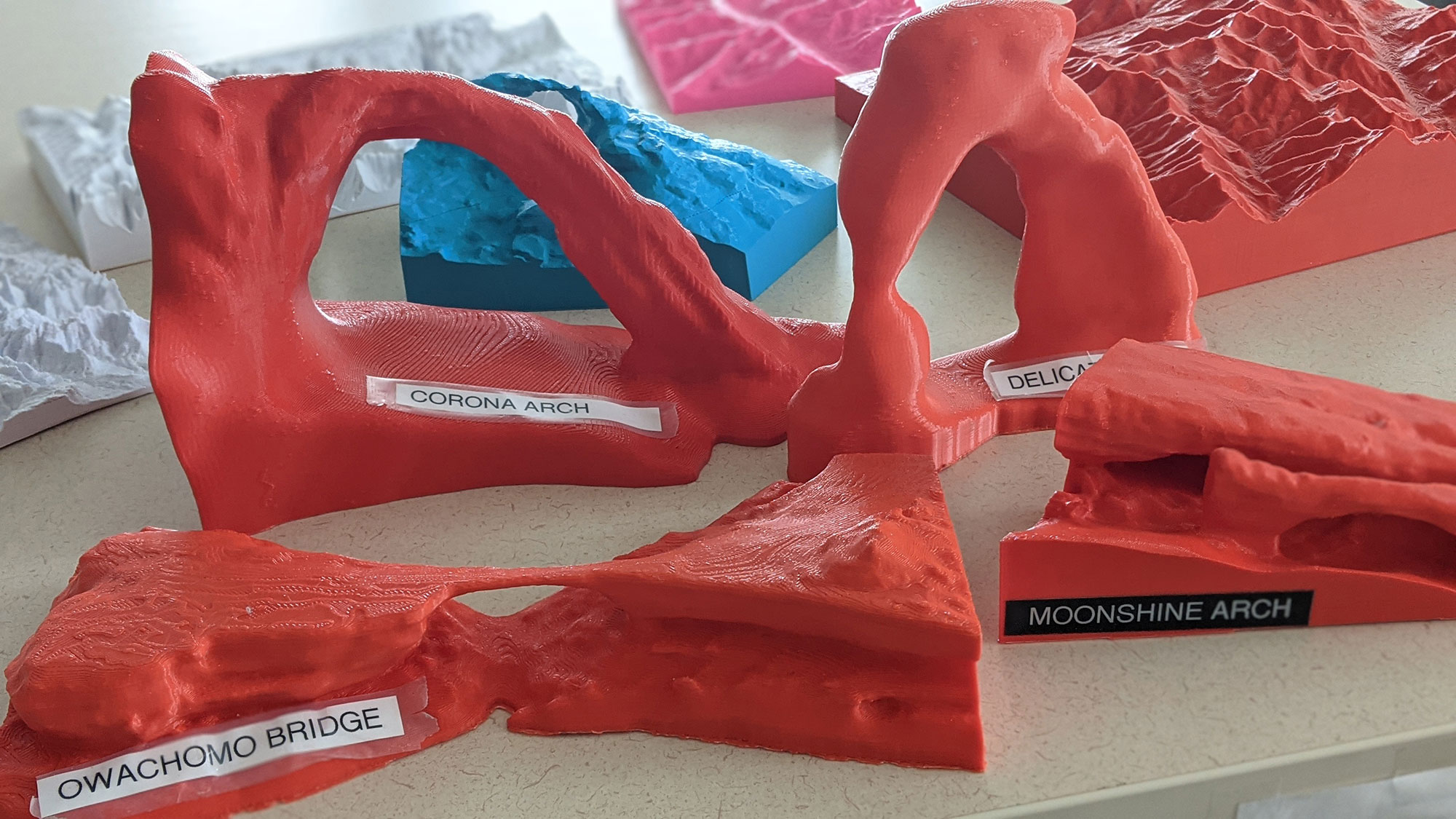
How 3-D modeling helped U geologists teach during COVID-19
Geoscience is a three-dimensional discipline. So 3-D modeling, in the form of virtual and 3-D printed real-world models, has found a home in the U’s Department of Geology and Geophysics. During the COVID-19 pandemic, instructors expanded their 3-D modeling efforts to continue to provide students a hands-on experience, while minimizing the number of hands on any one object.
-
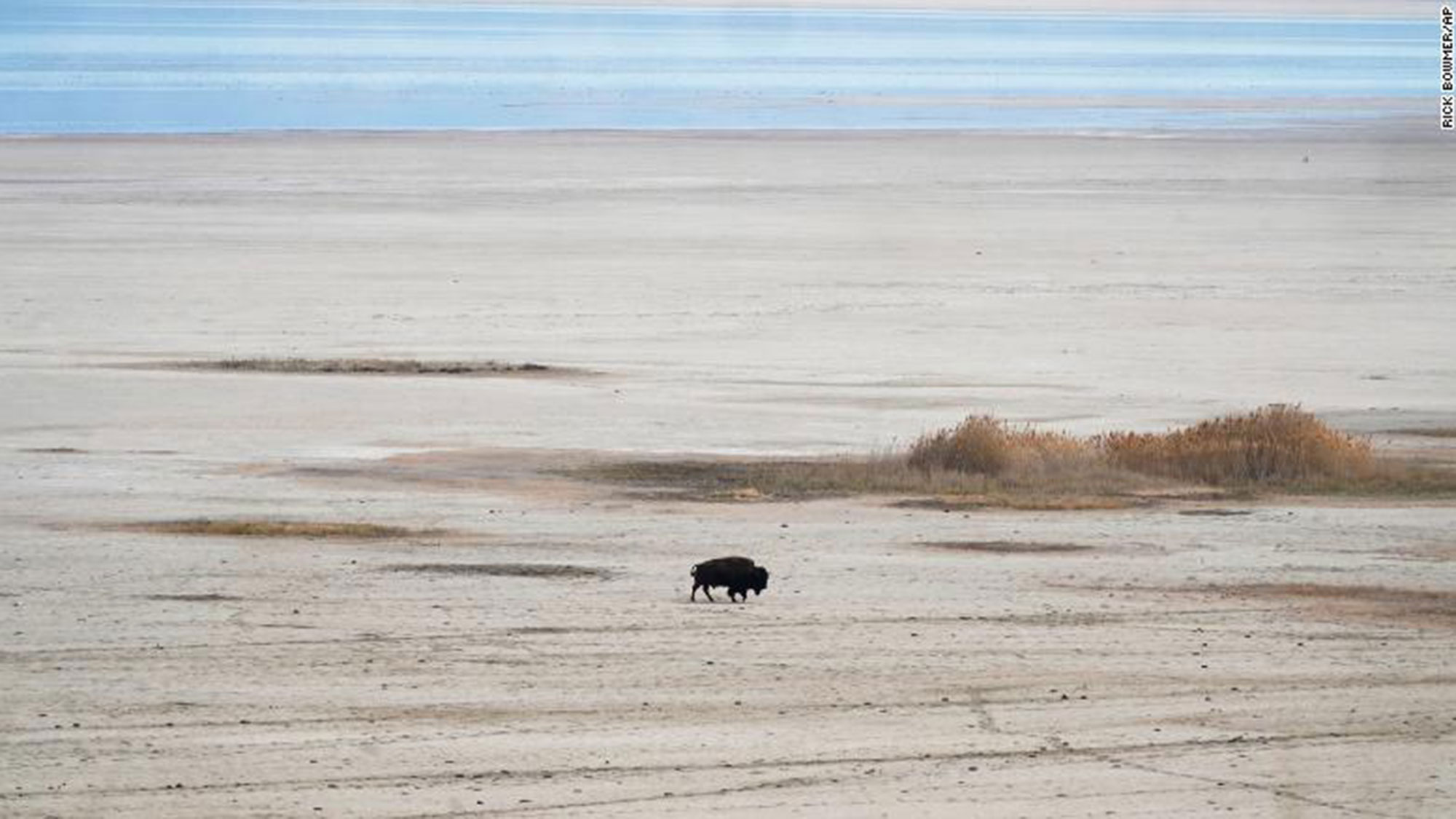
Great Salt Lake is shrinking fast. Scientists demand action before it becomes a toxic dustbin
Great Salt Lake is also known as America's Dead Sea -- owing to a likeness to its much smaller Middle Eastern counterpart -- but scientists worry the moniker could soon take new meaning. Human water consumption and diversion have long depleted the Utah lake. Its level today is inches away from a 58-year low, state officials say, and Western drought conditions fueled by the climate crisis have exacerbated conditions. The worst part? It's only July, and the lake historically doesn't reach its annual low until October.
-
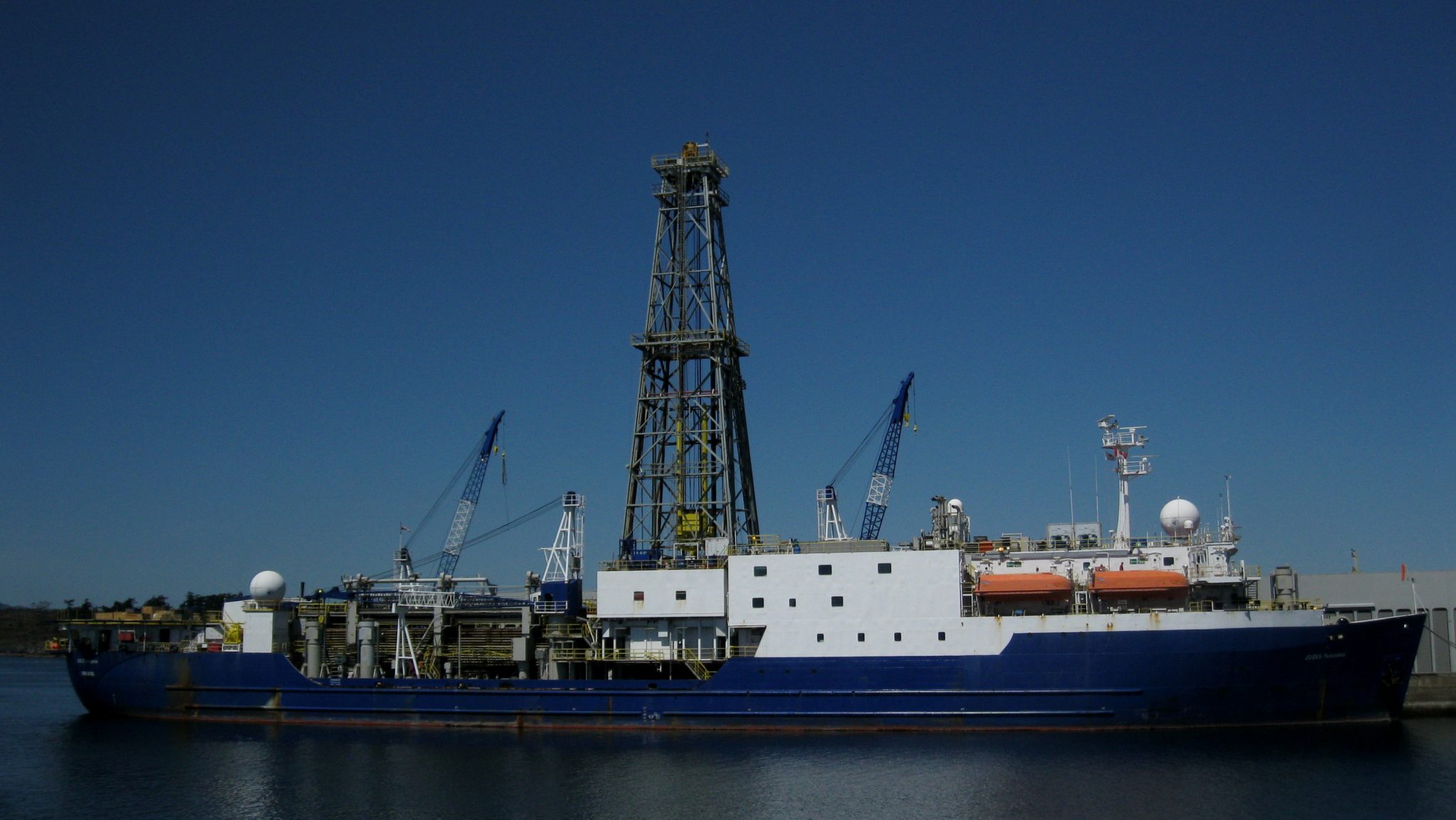
U professor to sail on expedition sampling the rocks of the seafloor
Sarah Lambart, assistant professor of geology and geophysics, has been invited to sail as a petrologist on the next expedition of the International Ocean Discovery Program (IODP). The world-famous research vessel JOIDES Resolution (JR) will leave the port of Reykjavik, Iceland on August 6th and sail for two full months on the coast of Norway. During the expedition, the team will drill rock cores in the ocean floor along the continental margin. As part of the Core Description Lab, Lambart will be responsible for describing the textures and mineralogical assemblages of the collected igneous rocks.
-

3-D printed replicas reveal swimming capabilities of ancient cephalopods
University of Utah paleontologists David Peterman and Kathleen Ritterbush know that it’s one thing to use math and physics to understand how ancient marine creatures moved through the water. It’s another thing to actually put replicas of those creatures into the water and see for themselves. They’re among the scientists who are, through a range of methods including digital models and 3-D printed replicas, “de-fossilizing” animals of the past to learn how they lived.
-
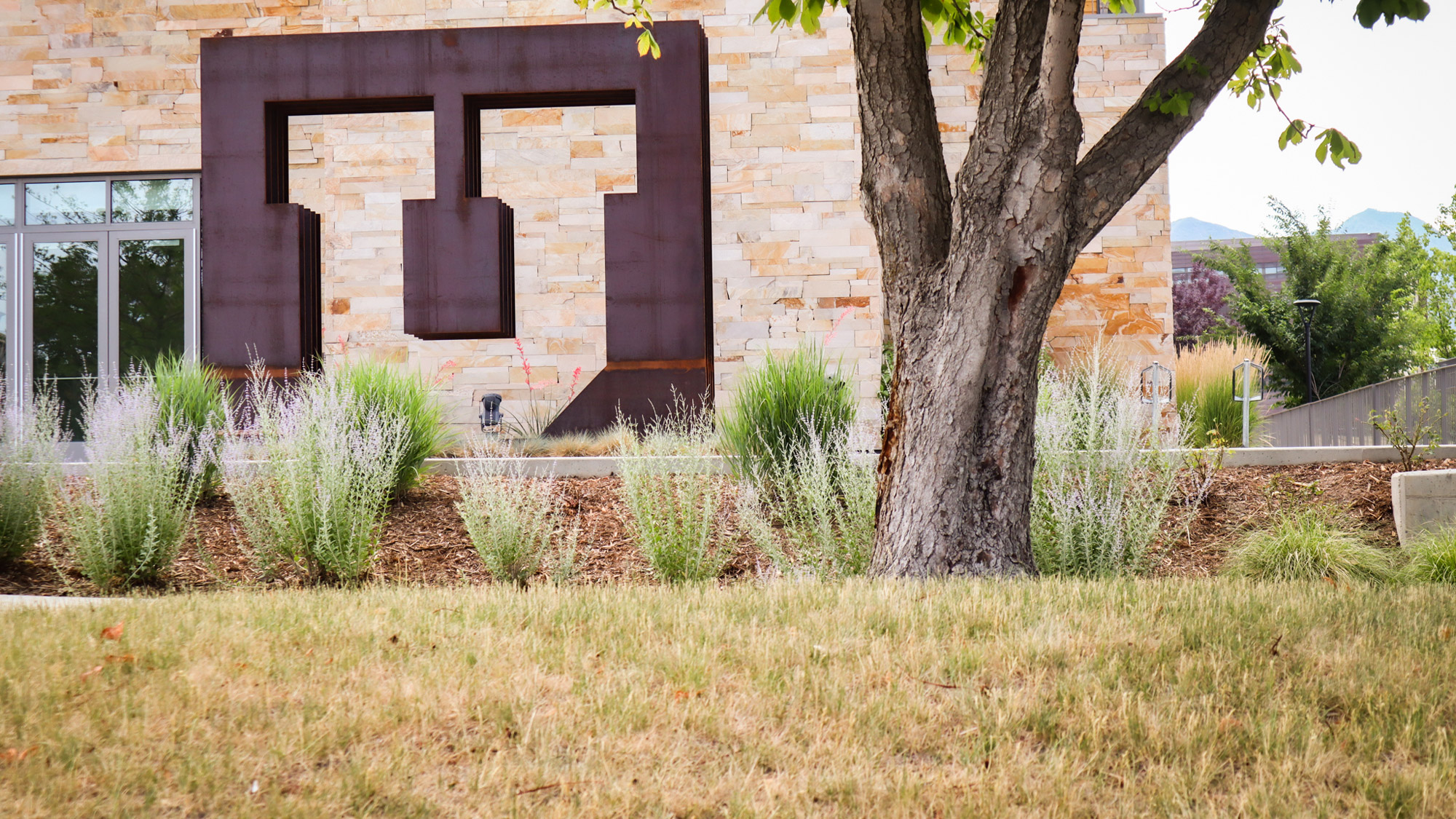
Campus lawns will survive, not thrive
The U’s lawns have a new look – and it comes with a purpose. Green grass is giving way to a brownish-yellow hue as the University plays its part to conserve water amidst our current severe drought. This shift in the appearance of campus is an intentional change, with limited water being prioritized away from grass and towards trees, shrubs, and planters.
-
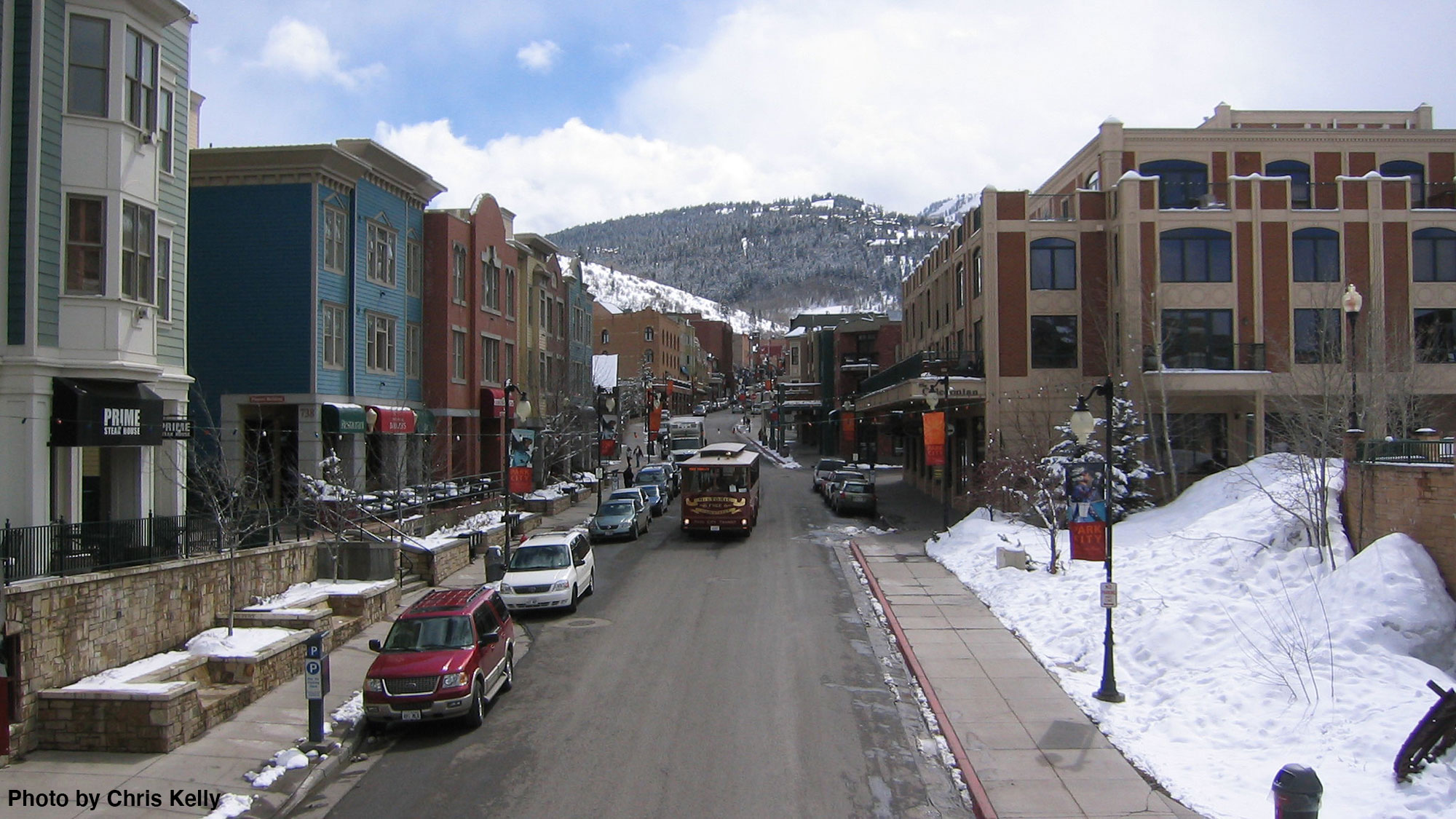
How air pollution changed during COVID-19 in Park City, Utah
As luck would have it, the air quality sensors that University of Utah researcher Daniel Mendoza and his colleagues installed in Park City, Utah in September 2019, hoping to observe how pollution rose and fell through the ski season and the Sundance Film Festival, captured a far more impactful natural experiment: the COVID-19 pandemic.
-
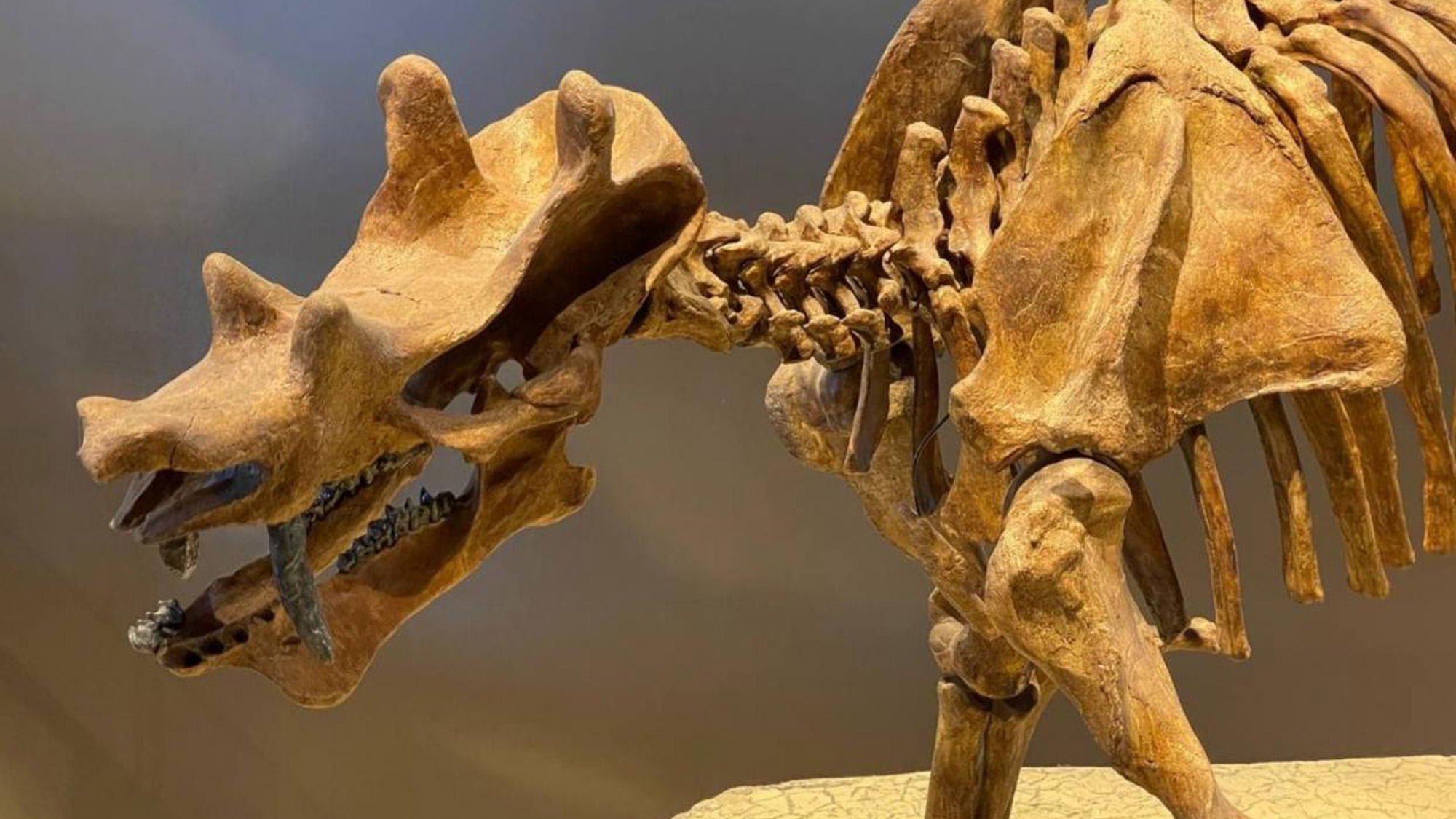
Digging up the past to understand our climate future
We are living in an era of extreme climate change. Human activities, such as dumping immense amounts of carbon dioxide into the air, are driving a sharp rise in global temperatures—by 2050, temperatures in Salt Lake City may be over 3°F hotter than they are today. How will ecology respond? While it’s impossible to predict the future, paleontologists can still give us some idea of what to expect by looking to the past. There was a time when natural causes, rather than human ones, altered the global climate in a similar way, and studying the clues within those rocks can help us get some idea of what’s in store over the coming decades and centuries.
-
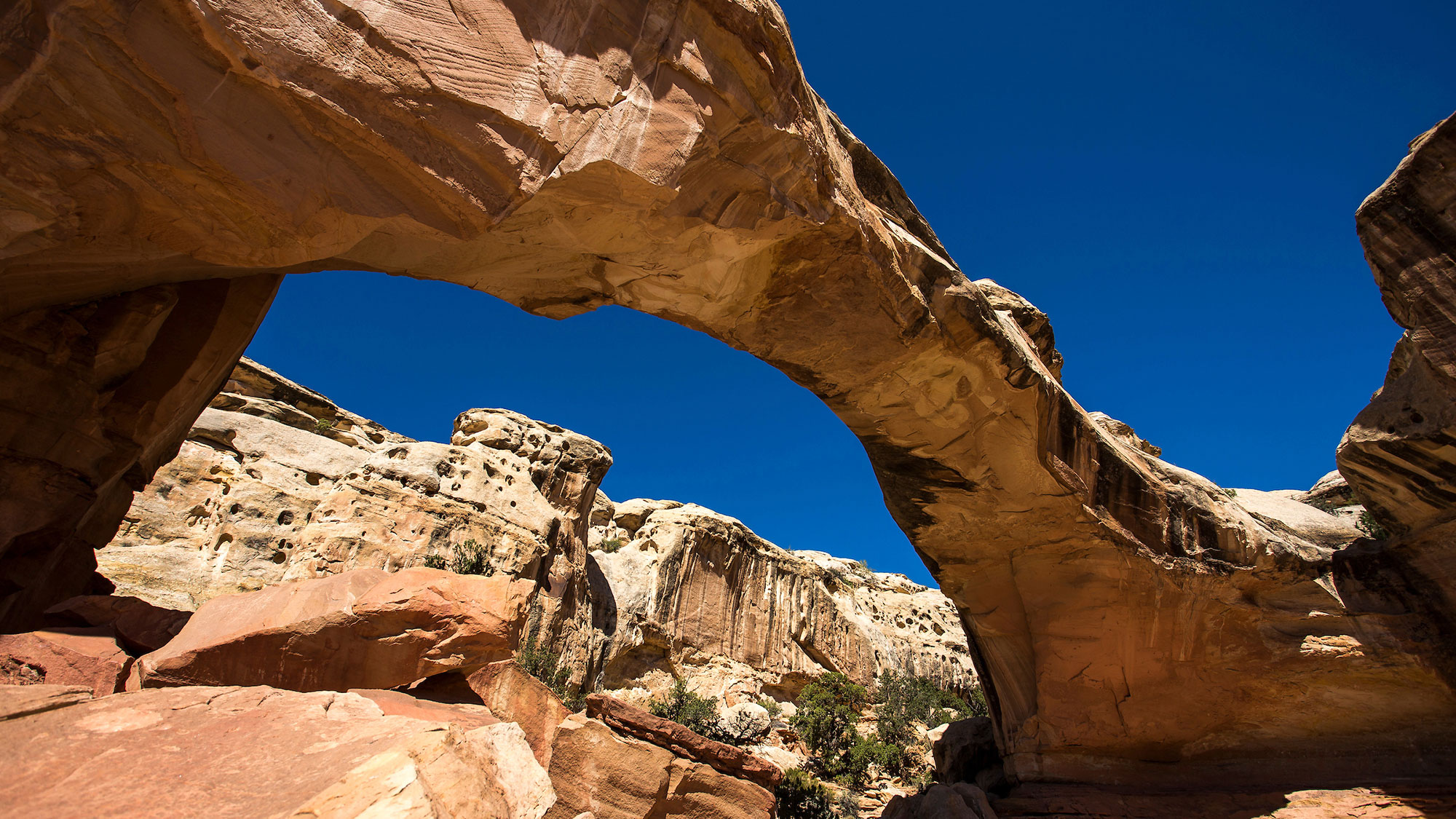
Why geoscience matters
Nearly everything around you—from the mountains out your window to the cell phone in your hand to the water from your tap—is connected to geoscience. Encompassing geology, geophysics, hydrogeology, mineral engineering and many other fields, geoscience is a study of the entire Earth and the systems and forces that shape and reshape it. Geoscientists study the things that fascinate us, like minerals and fossils, and are at the forefront of addressing complex problems that will impact our future, like climate change, natural resource use, environmental degradation and energy sustainability.
-
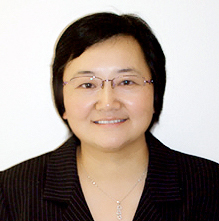
Atmospheric sciences professor Zhaoxia Pu selected for NOAA Science Advisory Board
The National Oceanic and Atmospheric Administration (NOAA) has selected Atmospheric sciences professor Zhaoxia Pu to join their Science Advisory Board. Pu is one of four university professors nationwide newly selected for the board.
-

Rare event that amplified Australia’s 2019 fires unlikely to reoccur
In the Southern Hemisphere spring of 2019 the usually very strong winds in the stratosphere, about 186 mph (300 km/h) at a height of 18.6 miles (30 km) almost completely collapsed within a matter of days —a so-called Sudden Stratospheric Warming (SSW) was underway. These events high in the atmosphere are known to influence the wind structure at the surface and cause anomalous weather conditions at the ground. The stratosphere affects surface weather and climate on a global scale, and ongoing global warming leads to major changes of this influence.
-
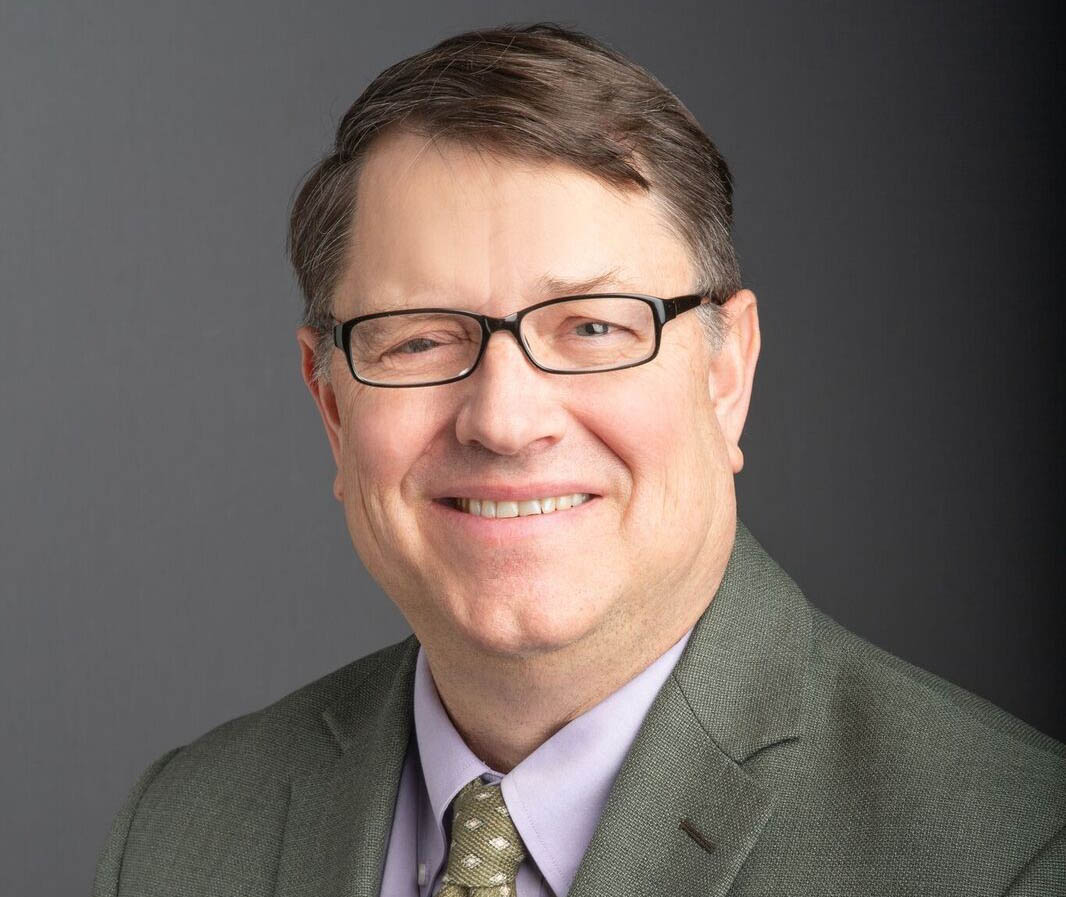
Reappointment of Darryl Butt as Dean of the College of Mines and Earth Sciences
This past semester, Dean Butt underwent a formal review, including a self-assessment and feedback by email; surveys of faculty, staff, students, and the Council of Academic Deans; and in-person meetings with College of Mines and Earth Sciences staff, faculty members, and department chairs. It is clear from the surveys and in-person meetings that Dean Butt has excelled in many areas as Dean of the College of Mines and Earth Sciences. He was praised for his commitment to the success of others, his work on creating a culture of inclusion and support for individuals from all backgrounds, and his vision of the college as a vibrant partner in campus initiatives. Concrete accomplishments include a focus on safety, the creation of the joint Materials Science department, and strategic investments in faculty hiring and student programs, as well fundraising and advancement. Clearly, Dean Butt has elevated the college in many different ways. Based on this review, there is strong support for Dean Butt to continue as Dean. Hence, he has been recommended a reappointment for a five-year term, and he has agreed. Dean Butt has reviewed and developed goals for his next term of service, with a focus on resolving the remaining issues surrounding the joint Materials Science department and executing against a strategic plan for the college and its constituent departments. Please join us in thanking Dean Butt for all he has done and for his many efforts that have advanced both the College of Mines and Earth Sciences and the University. We look forward to continuing to work with Dean Butt and all of you to advance your unit and achieve our shared goals.
-
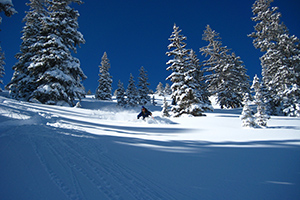
ATMOS 1000: Secrets of the Greatest Snow on Earth a Huge Hit with Students
What could be better than attending the University of Utah and learning about the Greatest Snow on Earth? Covering everything from the physics of powder to the challenges of climate change, Professor Steenburgh’s new online course is a huge hit with students. As one student said, “The best class I have ever taken! Anyone who enjoys recreating in the mountains in the winter should take this class.”
-
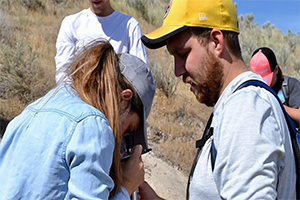
Revolutionizing science classrooms
This year, Utah’s students are entering revolutionary science classes. It’s not just about COVID-19—the Utah State Board of Education approved new science standards that shift the learning framework from a lecture-based model to one where students think and act like scientists as they explore real-world phenomena. Graduates of the University of Utah Master’s of Science for Secondary School Teachers (MSSST) program are uniquely prepared to meet the challenge.
-
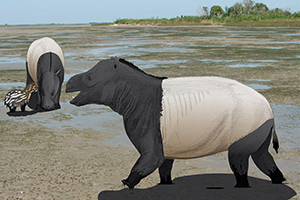
Fossilized tracks show earliest known evidence of mammals at the seashore
Today, the rocks of the Hanna Formation in south-central Wyoming are hundreds of miles away from the nearest ocean. But around 58 million years ago, Wyoming was oceanfront property, with large hippo-like mammals traipsing through nearshore lagoons.
-

Wildfire smoke trends worsening for Western U.S.
From the Pacific Northwest to the Rocky Mountains, summers in the West are marked by wildfires and smoke. New research from the University of Utah ties the worsening trend of extreme poor air quality events in Western regions to wildfire activity, with growing trends of smoke impacting air quality clear into September. The work is published in Environmental Research Letters.
-
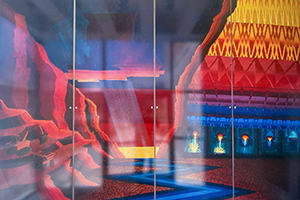
'Walking in Beauty'
The University of Utah’s Department of Art & Art History and College of Mines & Earth Sciences joined in a collaborative process to create a community-based mural that combines reflections of both the hard sciences and human nature of art. The art-making approach we take in my Painting Special Topics- Murals course is multifaceted with shared goals of the medium of murals and working together to form the message.
-

Earth Day
Can we slow the effects of climate change? Can we adapt to create a more resilient planet for humans and nature? Can we protect communities that are disadvantaged and most at risk? What kind of future do we want to leave for the next generation? These questions stir powerful emotions. Science can help us measure and predict climate change effects, but it can be challenging to communicate and understand what the data tell us.
-
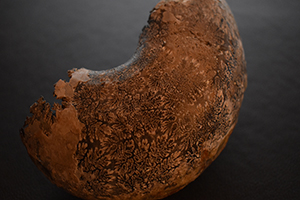
Ancient ammonoids’ shell designs may have aided buoyancy control
Ammonoids, ancestors of today’s octopus, squid and cuttlefish, bobbed and jetted their way through the oceans for around 340 million years beginning long before the age of the dinosaurs. If you look at the fossil shells of ammonoids over the course of that 340 million years, you’ll notice something striking—as time goes on, the wavy lines inside the shell become more and more complex, eventually becoming frilled almost like the edges of kale leaves.
-

Ranking names mining engineering U’s best-paid bachelor’s degree
According to a ranking from GradReports, the University of Utah ranks second in the state behind Utah Valley University for best bachelor’s degrees.
-
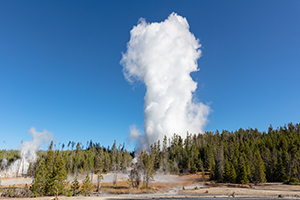
U scientists plumb the depths of the world’s tallest geyser
When Steamboat Geyser, the world’s tallest, started erupting again in 2018 in Yellowstone National Park after decades of relative silence, it raised a few tantalizing scientific questions. Why is it so tall? Why is it erupting again now? And what can we learn about it before it goes quiet again? The University of Utah has been studying the geology and seismology of Yellowstone and its unique features for decades, so U scientists were ready to jump at the opportunity to get an unprecedented look at the workings of Steamboat Geyser. Their findings provide a picture of the depth of the geyser as well as a redefinition of a long-assumed relationship between the geyser and a nearby spring. The findings are published in the Journal of Geophysical Research.
-
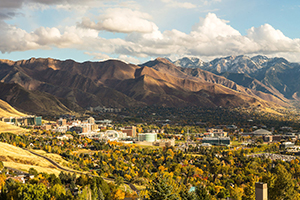
Climate change and air quality researcher John Lin named an Earth Leadership Program fellow
John Lin, professor of atmospheric sciences, is among the newest class of fellows of the Earth Leadership Program. Along with 20 other researchers from the U.S., Canada and Mexico, Lin will embark on a year-long training program that, according to the program, “prepares researchers to work together as effective agents of change by providing tools and perspectives to help participants cross traditional disciplinary and sector boundaries.” “The Earth Leadership Program enables me to tap into a network of fantastic scientists who are also passionate about making use of their expertise to tackle environmental issues,” Lin says.
-
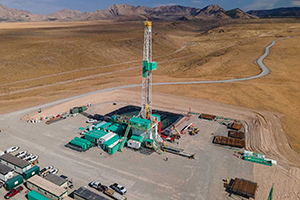
FORGE-ing a new partnership
Interdepartmental cooperation has always been a hallmark of success for the University of Utah. Two examples of this type of collaboration are found in the partnerships between Utah FORGE, a geothermal energy research project, and the University of Utah’s College of Education and the Department of Communication, within the College of Humanities. The research being conducted by Utah FORGE near the town of Milford, Utah, is focused on enhanced geothermal systems (EGS) technologies. The project is testing the tools and technologies to develop a geothermal resource where none exists naturally. If successful, these methods can be applied virtually anywhere in the world, providing a clean, inexhaustible energy source.
-
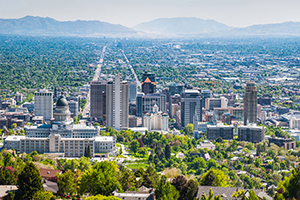
Correlating air quality, land use and socioeconomic status
As data improve in resolution, researchers can start asking new questions. In an urban area, for example, how do meter-by-meter patterns in land use correlate with zip code-level variations in air quality? And how do both of those dimensions tie into socioeconomic disparities? That’s exactly the question University of Utah researcher Daniel Mendoza asked as he explored the correlations between land, air and society in Salt Lake County. His results are published in Urban Science.
-

Taking greenhouse gas analysis on the road, er, rails
Research-grade air quality sensors are costly—around $40,000. For cities trying to monitor their greenhouse gas emissions, the cost may limit the number of sensors they can install and the data they can collect. Unless. . . Since 2014, the University of Utah has maintained research-grade suites of air quality instruments installed on light rail trains that move throughout the Salt Lake Valley every day. These mobile sensors, researchers estimate in a new study, cover the same area as 30 stationary sensors, providing the Salt Lake Valley with a highly cost-effective way to monitor its greenhouse emissions and fill in gaps in emissions estimates. The study is published in Environmental Science & Technology.
-
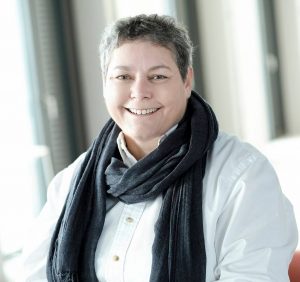
Geology & Geophysics professor named AGU Fellow
Tonie van Dam, a professor in the Department of Geology & Geophysics, is among the 62 earth scientists named fellows of the American Geophysical Union. Van Dam is the newest faculty member in the department, coming to the U from the University of Luxembourg. Her research is in geodesy, the science of the geometry of the Earth and its gravitational field.
-

U students launch instruments to study Utah’s windstorm
On the morning of Sept. 8, 2020, as the Wasatch Front braced for a catastrophic windstorm, three University of Utah seniors lofted a small scientific instrument from a parking lot near Red Butte Canyon, tied to a balloon, that would ride through the storm and collect data that would help the student-researchers learn from a severe weather event.
-
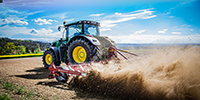
Atmospheric dust levels are rising in the Great Plains
Got any spaces left on that 2020 bingo card? Pencil in “another Dust Bowl in the Great Plains.” A study from University of Utah researchers and their colleagues finds that atmospheric dust levels are rising across the Great Plains at a rate of up to 5% per year. The trend of rising dust parallels expansion of cropland and seasonal crop cycles, suggesting that farming practices are exposing more soil to wind erosion. And if the Great Plains becomes drier, a possibility under climate change scenarios, then all the pieces are in place for a repeat of the Dust Bowl that devastated the Midwest in the 1930s. “We can’t make changes to the earth surface without some kind of consequence just as we can’t burn fossil fuels without consequences,” says Andy Lambert, lead author of the study and a recent U graduate. “So while the agriculture industry is absolutely important, we need to think more carefully about where and how we plant.”
-
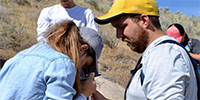
Revolutionizing science classrooms
This year, Utah’s students are entering revolutionary science classes. It’s not just about COVID-19—the Utah State Board of Education approved new science standards that shift the learning framework from a lecture-based model to one where students think and act like scientists as they explore real-world phenomena. Graduates of the University of Utah Master’s of Science for Secondary School Teachers (MSSST) program are uniquely prepared to meet the challenge. The program supports teachers who want to earn a master’s of science while still actively teaching in their classrooms. Every other summer, participants enroll to earn their project-based Master’s of Science with an emphasis in teaching. The scientific disciplines vary between cohorts, but the aim remains consistent—to master in-depth content knowledge, learn pedagogical techniques, and develop leadership skills. The program culminates in an intensive 8-week research experience with a U scientist and presents their findings to a committee. The students will graduate with their M.S. in December.
-
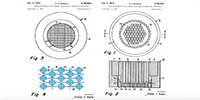
How U alumni helped invent the catalytic converter
Utah still sometimes has hazy, smoggy and even hazardous air days, but the air today is significantly cleaner than it was in the early 1970s. Back then, car tailpipes blurted out exhaust practically straight from the engine, clogging the skies. But environmental legislation in the 1970s led to the requirement that cars come equipped with a catalytic converter, a device that routes exhaust through a ceramic substrate coated with a catalytic washcoat that can contain platinum, palladium and/or rhodium. These elements act as chemical catalysts to convert toxic gases in exhaust to carbon dioxide, nitrogen and water. The catalytic converter has saved around 40 billion tons of carbon monoxide and around 4 billion tons of nitrogen oxides and 4 billion tons of hydrocarbons from entering the air we breathe.
-

Versatile test reactor key to next generation nuclear power
The promise of flexible, reliable, emissions-free power has inspired dozens of U.S. companies and universities to design the next generation of nuclear power reactors. Many of these advanced reactors feature safety systems that rely on the laws of physics to automatically shut down a reactor in case of an accident. Some would also reach temperatures high enough to power industrial processes such as hydrogen production, and most would work in tandem with intermittent renewables to balance power generation with loads on the electrical grid. To make these technologies a reality, U.S. reactor developers and Congress have asked for a scientific machine to test the fuels, materials and sensors. That machine, the U.S. Department of Energy’s proposed Versatile Test Reactor, will produce high levels of fast-neutron radiation to mimic, in weeks or months, the effects sustained over years or decades in a power reactor core. The accelerated experimental results achieved with VTR will benefit materials development for today’s water reactors as well. Even as the Versatile Test Reactor makes its way through the federal approval process, the VTR team has already begun collaborating with industry and academia to prepare experiments in anticipation of the VTR’s construction. One such collaboration—among researchers from the University of Utah, the University of Michigan, and Virginia Commonwealth University — is designing experiments to test various molten salt reactor technologies.
-

Evergreen needles act as air quality monitors
Every tree, even an evergreen, can be an air quality monitor. That’s the conclusion of researchers at the University of Utah who measured the magnetism of particulate matter on the needles of evergreen trees on the U campus. That measurement, they found, correlated to general air quality, suggesting that analysis of the needles—a relatively simple and low-cost process—could provide a high-resolution, year-round picture of air quality. “Wherever you have a tree you have a data point,” says Grant Rea-Downing, a doctoral student in geology and geophysics. “A tree doesn’t cost $250 to deploy. We’ll be able to map particulate matter distributions at a very high resolution for very little cost.”
-
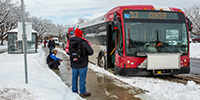
How's the transit weather?
If the words in a weather forecast, such as “cool,” “sunny” or “windy,” can influence the way you dress for the day—can they also influence whether or not you take public transit? In new research published in Vehicles, U researchers found a correlation between words used in media coverage related to weather or air quality, and transit ridership. It’s not enough yet to say that media coverage causes changes in ridership, say authors Tabitha Benney and Daniel Mendoza. But it’s enough to explore what factors in to a person’s decision to ride transit and whether that decision can be nudged.
-

Our energy hunger is tethered to our economic past
Just as a living organism continually needs food to maintain itself, an economy consumes energy to do work and keep things going. That consumption comes with the cost of greenhouse gas emissions and climate change, though. So, how can we use energy to keep the economy alive without burning out the planet in the process? In a paper in PLOS ONE, University of Utah professor of atmospheric sciences Tim Garrett, with mathematician Matheus Grasselli of McMaster University and economist Stephen Keen of University College London, report that current world energy consumption is tied to unchangeable past economic production. And the way out of an ever-increasing rate of carbon emissions may not necessarily be ever-increasing energy efficiency—in fact it may be the opposite.
-

How Salt Lake’s buildings affect its climate future
Anyone who’s lived or worked in old buildings knows that their heating and cooling systems can’t compare to the efficiency, insulation and consistency of those in new buildings. But the quirks of old buildings’ climate control systems aren’t just seasonal annoyances—they could shape the future of cities’ energy use in a warming climate.
-
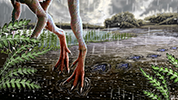
Insights into climate change during origin of dinosaurs
The Triassic Period, about 252 to 201 million years ago, was a time of volatile change, particularly during an interval known as the Carnian (about 237 to 227 million years ago). Three dramatic events occurred on Earth: the first dinosaurs appeared, gigantic volcanic eruptions called the Wrangellia large igneous province spewed out greenhouse gasses and the climate suddenly shifted to warmer, more humid conditions that scientists call the Carnian Pluvial Episode (CPE).
-
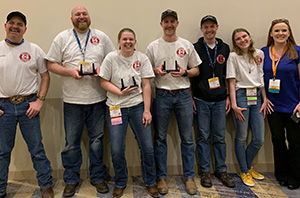
U’s first mine rescue team wins big
The University of Utah’s first-ever mining engineering mine rescue team won big at the 2020 Society of Mining, Metallurgy and Exploration Engineers (SME) annual conference in late February. The U led in the first aid and breathing apparatus categories, and took the overall competition. Four other more experienced mining schools participated in the event, so the U’s win took SME attendees by surprise. For the competitors, the victory was the result of lots of hard work and tenacity. The winners were Victor Harrell (trainer), Travis Brammer, Rebecca Ray, Stephen Hall, Jack Peterson, Paige Epsten, and Amy Richens.
-
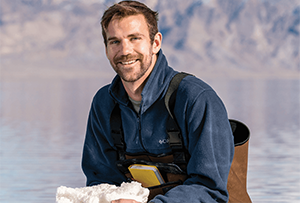
They Pay Me to Do This
For many students, the University of Utah is a second home. They eat, sleep, study, and even work here. In fact, one in four undergraduates (about 6,000 students) are employed in one way or another by the U. These jobs not only help students pay the bills but also help get them on a faster track to graduation. Compared to their counterparts, students who are employed through campus jobs are about 12 percent more likely to graduate within six years or less. From fish feeders to salt enthusiasts, meet some of our students with the most unusual, interesting, and rewarding jobs that leave them remarking, “Wow, they pay me to do this!”
-
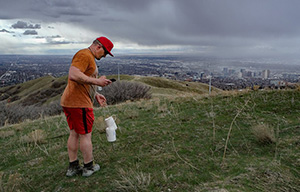
After a 5.7 earthquake, Utah seismologists investigate a ‘virtually unknown’ fault
Soon after Salt Lake City stopped shaking March 18 from its strongest earthquake on record, Amir Allam, a University of Utah seismologist, knew he had to get busy if he hoped to closely study the hundreds of aftershocks he knew would follow the 7:09 a.m. jolt.
-

TRAX air quality study expands
For more than five years, University of Utah air quality sensors have hitched rides on TRAX light rail trains, scanning air pollution along the train’s Red and Green Lines. Now the study, once a passion project of U researchers, has become a state-funded long-term observatory, with an additional sensor on the Blue Line into Sandy and Draper and additional insights into the events that impact the Salt Lake Valley’s air, including summer fireworks and winter inversions.
-
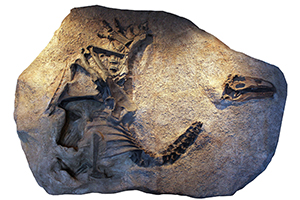
New species of Allosaurus discovered in Utah
A remarkable new species of meat-eating dinosaur has been unveiled at the Natural History Museum of Utah. Paleontologists unearthed the first specimen in early 1990s in Dinosaur National Monument in northeastern Utah. The huge carnivore inhabited the flood plains of western North America during the Late Jurassic Period, between 157-152 million years ago, making it the geologically oldest species of Allosaurus, predating the more well-known state fossil of Utah, Allosaurus fragilis. The newly named dinosaur Allosaurus jimmadseni, was announced today in the open-access scientific journal PeerJ.
-

The Utah Roadmap: Positive solutions on climate and air quality
At the request of the Utah Legislature, the Kem C. Gardner Policy Institute – with the assistance of a 37-person Technical Advisory Committee – prepared this Utah Roadmap to assist with legislative policymaking to improve air quality and address causes and impacts of a changing climate. The Utah Roadmap identifies areas of opportunity to further reduce air emissions and ensure a healthy, productive, and prosperous future for all Utahns.
-
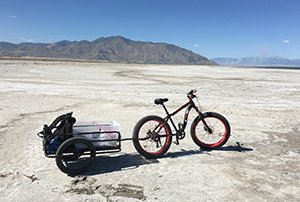
A Fragile Crust Protects From Dust
The flat dry lakebed (also called a playa) surrounding Utah’s Great Salt Lake is more than 750 square miles—an area bigger than Houston. The wide-open landscape is surprisingly varied and is the realm of coyotes, bison, and a few hardy plants. It’s probably safe to say that no one knows the Great Salt Lake playa better than University of Utah atmospheric scientist Kevin Perry.
-
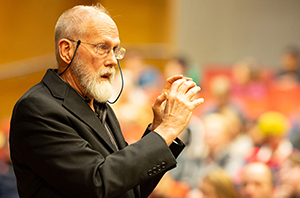
Geology professor wins international earth science award
Thure Cerling, Distinguished Professor and chair of the Department of Geology and Geophysics, has been awarded the Émile Argand Award from the International Union of Geological Sciences. This is the organization’s highest honor, and is awarded “to honor an active senior geoscientist of high international recognition and outstanding scientific record.”
-

Salt Lake's ozone problem is worsening despite air cleanup efforts
The Salt Lake City area has made strides in cleaning up the airborne particulate matter that cloaks the valley during winter inversions and has kept these pollution levels within federal limits in recent years. At the same time, ozone, an invisible gas that irritates the lungs and airways, has continued to plague the region. U.S. Rep. Ben McAdams is trying to figure out why and what to do about it.
-
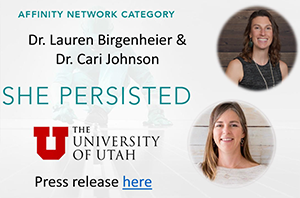
GRIT Award Winners 2019
Dr. Lauren Birgenhier and Dr. Cari Johnson have won a 2019 GRIT Award for She Persisted. The GRIT Awards℠ & Best Energy Workplaces℠, sponsored by Medallia, were created to recognize women leaders in energy and the male allies who advocate for their advancement. Nearly 300 nominations poured in from across the world from oil and gas, utilities, and alternative energy companies, academia, and non-government organizations (NGOs).
-
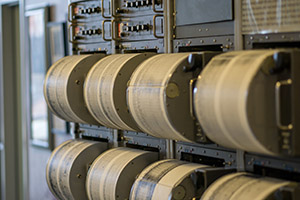
University of Utah Seismic Networks Can Contribute to Nuclear Security
In a paper published as part of an upcoming focus section on regional seismic networks in Seismological Research Letters, University of Utah seismologist Keith Koper explains how the work of regional seismic networks in North America is contributing to nuclear test monitoring, particularly in the case of low-yield explosions. Koper is the director of the University of Utah Seismograph Stations.
-

U-led search team recovers new meteorites originally from the moon
The new meteorites were found by the 2018-19 U.S. Antarctic Search for Meteorites program (ANSMET) field team, led by Jim Karner at the University of Utah and Ralph Harvey at Case Western Reserve University. The lunar meteorites were recovered from icefields near the Dominion Range (DOM) of the Transantarctic Mountains, roughly 400 kilometers (250 miles) from the South Pole.
-
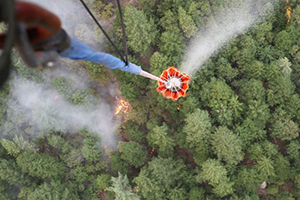
"Fire inversions" lock smoke in valleys
Smoke from a summer wildfire is more than just an eye-stinging plume of nuisance. It’s a poison to the lungs and hearts of the people who breathe it in and a dense blanket that hampers firefighting operations. There’s an atmospheric feedback loop, says University of Utah atmospheric scientist Adam Kochanski, that can lock smoke in valleys in much the same way that temperature inversions lock the smog and gunk in the Salt Lake Valley each winter. But understanding this loop, Kochanski says, can help scientists predict how smoke will impact air quality in valleys, hopefully helping both residents and firefighters alike.
-
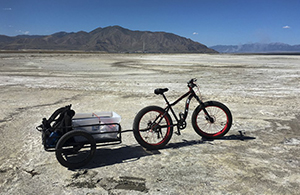
The Great Salt Lake is drying up, and a Utah scientist is trying to figure out the danger of the dust
The exposed, encrusted bed of the depleted Great Salt Lake stretches for miles and miles, merging with Utah’s West Desert somewhere off in a distance defined by mountain ridgelines rising above the horizon like jagged clouds. Few know this rarely visited terrain better than Kevin Perry, an atmospheric sciences professor with the University of Utah who spent more than 125 days pedaling 2,300 miles of playa on a one-man data-gathering mission.
-

Ages of the Navajo Sandstone
The real Jurassic Park was as an ancient landscape home to a vast desert covered mostly in sand dunes as far as the eye could see, where dinosaurs and small mammals roamed southern Utah.
-

Quantum Snow
Peter Veals and Trey Alvey, both recent atmospheric sciences PhD graduates, were recently mentioned in an article from the Deseret News entitled, “8 Start-ups Transforming the Face of Entrepreneurship in Utah.” The article states, “One of the eight most exciting to come from the University of Utah this year is Quantum Snow.” Veals and Alvey founded Quantum Snow to bring what skiers in Utah crave: fresh powder on demand, without having to wait for Mother Nature to deliver it.
-
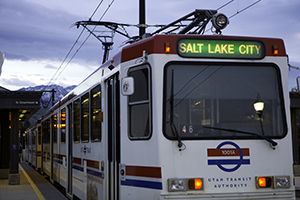
New rider data shows how public transit reduces greenhouse gas and pollutant emissions
Public transit has long been an answer for people looking to leave their car at home and reduce their air pollution emissions. But now, with better rider tracking tools, the University of Utah and the Utah Transit Authority can better answer the question: How much does public transit reduce pollution emissions?
-

Utah's Red Rock Metronome
At about the same rate that your heart beats, a Utah rock formation called Castleton Tower gently vibrates, keeping time and keeping watch over the sandstone desert. Swaying like a skyscraper, the red rock tower taps into the deep vibrations in the earth—wind, waves and far-off earthquakes. New research from University of Utah geologists details the natural vibration of the tower, measured with the help of two skilled rock climbers. Understanding how this and other natural rock forms vibrate, they say, helps us keep an eye (or ear) on their structural health and helps us understand how human-made vibrations affect seemingly unmovable rocks. The results are published in the Bulletin of the Seismological Society of America.
-
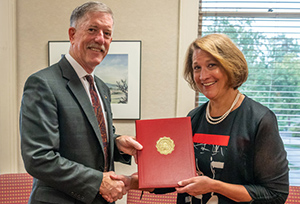
USGS partners with University of Utah
In August 2018, University of Utah president Ruth Watkins and United States Geological Survey director James Reilly signed a memorandum of understanding establishing a partnership between the two institutions that will enable both to draw on the facilities and expertise of the other.
-
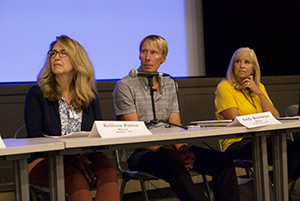
Summit and Wasatch counties mayors discuss bipartisanship at climate town hall
Climate change is often framed as a partisan issue, but it doesn’t have to be that way. That was the message agreed upon by a group of Summit and Wasatch County leaders, local academics and students who discussed climate change at a panel at the Park City Library on Wednesday.
-

Come crocs of the past were plant eaters
Based on careful study of fossilized teeth, scientists Keegan Melstom and Randall Irmis at the Natural History Museum of Utah at the University of Utah have found that multiple ancient groups of crocodyliforms—the group including living and extinct relatives of crocodiles and alligators—were not the carnivores we know today, as reported in the journal Current Biology on June 27, 2019. In fact, the evidence suggests that a veggie diet arose in the distant cousins of modern crocodylians at least three times.
-

Metallurgical and Materials Science Departments Merge
Effective July 1, the University of Utah’s departments of Materials Science and Engineering (MSE) and Metallurgical Engineering (METE) have merged into a single academic department administered jointly by the College of Engineering and College of Mines and Earth Sciences.
-

A New View of Wintertime Air Pollution
The processes that create ozone pollution in the summer can also trigger the formation of wintertime air pollution, according to a new study from researchers at the University of Colorado Boulder and NOAA, in partnership with the University of Utah. The team’s unexpected finding suggests that in the U.S. West and elsewhere, certain efforts to reduce harmful wintertime air pollution could backfire.
-

Google it: U of U researchers equip Street View vehicles as mobile air monitors
University of Utah researchers have a new partner in studying air pollution along the Wasatch Front. Google is on board with allowing air monitoring equipment on board two of their Street View mapping vehicles.
-

Aftershocks in Yellowstone
On Aug. 17, 1959, back when Dwight D. Eisenhower was president, the U.S. had yet to send a human to space and the nation’s flag sported 49 stars, Yellowstone National Park shook violently for about 30 seconds. The shock was strong enough to drop the ground a full 20 feet in some places. It toppled the dining room fireplace in the Old Faithful Inn. Groundwater swelled up and down in wells as far away as Hawaii. Twenty-eight people died. It went down in Yellowstone history as the Hebgen Lake earthquake, with a magnitude of 7.2.
-

Climate Change and Snowmelt
In a new study published today in Proceedings of the National Academy of Sciences, University of Utah professor Paul Brooks and University of Nevada Reno professor Adrian Harpold show that changes in humidity may determine how the contribution of snowpack to streams, lakes and groundwater changes as the climate warms.
-

LIFE OF INVENTION
In December 2017, the National Academy of Inventors (NAI) elected Zhigang Zak Fang as a 2017 fellow. Fang, a professor of metallurgical engineering in the College of Mines and Earth Sciences, was an obvious choice; he has over 50 issued patents, several more pending and multiple new projects in the works. Fang embodies the spirit of NAI, an organization that honors academics who have facilitated exceptional inventions that impact society. He joins 12 other U faculty with NAI fellowships.
-

Dino-Mite Discovery
A remarkable new fossilized skeleton of a tyrannosaur discovered in the Bureau of Land Management’s Grand Staircase-Escalante National Monument (GSENM) in southern Utah was airlifted by helicopter Sunday, Oct. 15, from a remote field site, and delivered to the Natural History Museum of Utah where it will be uncovered, prepared and studied. The fossil is approximately 76 million years old and is most likely an individual of the species Teratophoneus curriei, one of Utah’s ferocious tyrannosaurs that walked western North America between 66 and 90 million years ago during the Late Cretaceous Period.
-

Dr. Michael Free Awarded DOE Grant
The DOE grant is to lead research aimed at developing a more efficient way to separate isotopes to facilitate domestic isotope production and personnel training.
-

Edge on the Competition
Alexander Lark, a graduate student in the Department of Metallurgical Engineering, develops a new, wear-resistant type of metal
-

Predicting Hurricane's Wrath
As Hurricane Matthew barreled through the Caribbean and toward the U.S. Atlantic coast in 2016, forecasters have worked to determine the storm’s probable path and intensity, in order to make appropriate recommendations to the regions in the storm’s path.
-

Mapping Salt Lake's Tap Water
As Utah's population continues to grow, water managers and water scientists are looking more at water's journey to our taps. Yousuf Jameel and his colleauges, including Dr. Gabe Bowen, sampled tap water to study the various sources of water.
-

Isotope Sleuths
They say that dead men tell no tales. A University of Utah spin-off company begs to differ. Hair, teeth and bone all preserve a record of where a person’s been – often an invaluable boon to law enforcement with no other leads to go off of.
-

Intel Foundation Young Scientist Award
Kathy Liu, a senior at West High School, Salt Lake City won the Intel Foundation Young Scientist Award with a $50K scholarship in Phoenix this month. Kathy’s science project, “Natural Material-based Solid Polymer Electrolyte for High Performance Lithium Battery,” was done in laboratories of the Department of Metallurgical Engineering, College of Mines and Earth Sciences, University of Utah, under the supervision of Dr. Xuming Wang, Research Professor in the department.
-

2016 Outstanding Undergraduate Research Award
Ben White receives the Outstanding Undergraduate Researcher Award for the College of Mines and Earth Sciences awarded by the U's Office of Undergraduate Research.
-

Atmos Students Learn about Air Quality Across the Wastach Front
Students in Atmospheric Sciences are learning about how instrumentation plays a role in air quality research.
-

Smith Receives 2015 Paul G. Silver Award for Outstanding Scientific Service
Robert Smith, a professor in Geology and Geophysics, will receive the 2015 Paul G. Silver Award for Outstanding Scientific Service at the 2015 American Geophysical Union Fall Meeting, to be held 14–18 December in San Francisco, Calif. The award recognizes outstanding contributions to the fields of geodesy, seismology, or tectonophysics through mentoring of junior colleagues, leadership of community research initiatives, or other forms of unselfish collaboration in research.
-

From Bread to Bulb
Most Christmas lights, DVD players, televisions and flashlights have one thing in common: They’re made with light emitting diodes (LEDs). Two University of Utah researchers have now found a way to create LEDs from food and beverage waste. In addition to utilizing food and beverage waste that would otherwise decompose and be of no use, this development can also reduce potentially harmful waste from LEDs generally made from toxic elements.
-

Electrodynamic Eddy Current Separation of End-of-Life PV Materials
York Smith, Post Doctoral Researcher at the University of Utah receives an award for his research focused on applying electrodynamic eddy current separation techniques to the recycling processing of end-of-life solar panel materials.
-

Professor Edward Zipser Wins Carl-Gustaf Rossby Research Medal
Dr. Edward Zipser has won the 2016 Carl-Gustaf Rossby Research Medal. This prize is the highest award for atmospheric science awarded by the American Meteorological Society.
-

John Horel Receives the AMS Francis W. Reichelderfer Award
Atmospheric Sciences professor Dr. John Horel has won the Francis W. Reichelderfer Award from the American Meteorological Society. This award is given in recognition of distinguished contributions to the provision of operational environmental services to the public.
-

Drilling for Water on the Greenland Ice Sheet
This spring, Dr. Kip Solomon and Olivia Miller (Graduate Student) traveled to the Greenland ice sheet to study how the ice sheet is melting.
-

New tool to save salmon: isotope tracking
Salmon carry a strontium chemical signature in their “ear bones” that lets scientists identify specific streams where the fish hatched and lived before they were caught at sea. The new tool may help pinpoint critical habitats for fish threatened by climate change, industrial development and overfishing.
-

U Geologist Studies Talking Arches
Utah’s national parks are places that we all visit for the beauty, the unusual landscapes and the remoteness. And certainly because these places are so quiet. But are they really? Turns out, these arches are “talking” to us… sort of.
-

Jan D. Miller receives 2015 Rosenblatt Prize
Jan D. Miller, Ivor D. Thomas Distinguished Professor of Metallurgical Engineering at the University of Utah, was honored with the Rosenblatt Prize for Excellence, the U's most prestigious award, during a special ceremony at the Honorary Degree Dinner held May 6.
-

Where in the World is...Leah Campbell
Leah Campbell is a PhD candidate in the Department of Atmospheric Sciences. Her research, which builds on her love of the mountains and the outdoors, focuses on lake-effect snowfall and mountain effects on precipitation. Leah will be investigating the effects of the Andes Mountains on precipitation structure and distribution during winter storms in south-central Chile.
-

Scientists See a Deeper Yellowstone Magma
Reservoir of partly molten rock is four times bigger than shallower chamber. University of Utah seismologists discovered and made images of a reservoir of hot, partly molten rock 12 to 28 miles beneath the Yellowstone supervolcano, and it is 4.4 times larger than the shallower, long-known magma chamber.
-

UofU Air Quality Research featured on Discovery Channel
A team of researchers from the University of Utah Department of Atmospheric Sciences are learning new information about air quality in the Salt Lake Valley through the equipment they installed on a UTA TRAX train.
-

UofU Geology Students Win 2nd Place in Imperial Barrel Award competition
U of U team (Black Diamond Ventures) placed 2nd in the Rocky Mountain regional competition.
-

A Stiff New Layer in Earth's Mantle
By crushing minerals between diamonds, a University of Utah study suggests the existence of an unknown layer inside Earth: part of the lower mantle where the rock gets three times stiffer. The discovery may explain a mystery: why slabs of Earth’s sinking tectonic plates sometimes stall and thicken 930 miles underground.
-

Water in Smog may Reveal Pollution Sources
The chemical signature of water vapor emitted by combustion sources such as vehicles and furnaces has been found in the smoggy winter inversions that often choke Salt Lake City. The discovery may give researchers a new tool to track down the sources of pollutants and climate-changing carbon dioxide gas.
-

Dr. Jan D. Miller, Professor in Metallurgical Engineering, to be Inducted into the National Academy of Inventors
Dr. Jan D. Miller, Ivor Thomas Distinguished Professor of Metallurgical Engineering will be inducted as a fellow into the National Academy of Inventors on March 20, 2015 at the California Institute of Technology in Pasadena California.
-

Past Global Warming Similar to Today’s
The rate at which carbon emissions warmed Earth’s climate almost 56 million years ago resembles modern, human-caused global warming much more than previously believed, but involved two pulses of carbon to the atmosphere, University of Utah researchers and their colleagues found.
-

TRAX to Measure Air Quality
Atmospheric Sciences Post Doctoral Researcher Logan Mitchell has teamed up with UTA to measure air quality from a TRAX train.
-

Metallurgy Research Group Receives TCIP Grant
SolaPur LLC, a company started by Dr. Krista Carlson and Jeffery Huber, received a Technology Commercialization & Innovation Program (TCIP) grant from the Utah Governor's Office of Economic Development.
-

Roger and Dawn Crus Center for Renewable Energy Dedication
On Monday April 28, 2014 the Department of Metallurgical Engineering celebrated the Grand Opening of the Roger and Dawn Crus Center for Renewable Energy.
-

Warm US West, Cold East: A 4,000-Year Pattern
Last winter's curvy jet stream pattern brought mild temperatures to western North America and harsh cold to the East. A University of Utah-led study shows that pattern became more pronounced 4,000 years ago, and suggests it may worsen as Earth's climate warms.
-

CMES Students Awarded Kennecott Scholarships
Nine students from the College of Mines and Earth Sciences were awarded Kennecott Scholarships for the 2014-2015 school year.
-

Professor Courtenay Strong Awarded Early Career Teaching Award
Professor Courtenay Strong was awarded the 2013-2014 University Early Career Teaching Award from the University of Utah. Professor Strong is one of 50 total winners of the award since its inception 15 years ago.
-

Ute Weather Center featured in the 2014 Student Innovation Report
The Ute Weather Center, run by students in the Department of Atmospheric Sciences, was featured in the 2014 "Student Innovation Report" for their work forecasting for campus and surrounding areas.
-

Dr. Sohn Named U of U Distinguished Professor
Dr. Sohn, a professor in the Metallurgical Engineering Department, was given the University of Utah Distinguished Professor Award.
-

Mountain Meteorology Quadcopter
Atmospheric Sciences' Mountain Meteorology group has a new TurboAce Matrix Quadcopter. They intend on using it as an instrumented device to collect vertical profiles of the lower atmosphere. Click this story to view the video.
-

Crowdsourced Rain Samples Map Hurricane Sandy's Evolution
A unique method to collect rain water samples during Hurricane Sandy has revealed the storm's chemical "signature" with a new level of detail. The technique may also lead to weather model advances that will ultimately improve storm prediction, say researchers at the University of Utah whose study was published online today in PLOS ONE.
-

Global Precipitation Measurement Satellite Launch Party
Join us February 27, 2014 from 11an-1pm in 802 WBB to watch the launch live from the Tanegashima Space Center, Japan. There will be cool presentations, NASA GPM swag, and PIZZA!
-

Mine Landslide Triggered Quakes
Last year's gigantic landslide at a Utah copper mine probably was the biggest nonvolcanic slide in North America's modern history, and included two rock avalanches that happened 90 minutes apart and surprisingly triggered 16 small earthquakes, University of Utah scientists discovered.
-

U Students Study Lake Effect Snow in NY
Atmospheric Sciences Professor Steenburgh and some of his students are in Oswego County, New York for the OWLeS field program "Ontario Winter Lake-Effect Systems" (owles.org). During their 6 weeks stay students will take measurements every six hours during snow storms giving them an opportunity that would not be possible in a classroom.
-

Snowflake Research
More accurate storm forecasting begins with a single snowflake
-

U scientists unearth the oldest Tyrannosaur to Date
U scientists unearth the oldest Tyrannosaur to date, an early ancestor of T-rex. Mark Lowen and Randy Irmis, along with co-authors P. J.Currie and Scott Sampson published the finidings in PLoS One. Lythronax argestes, whose name means "king of gore was a 24-foot-long sharp-toothed creature weighed 2.75 tons.
-

Microwave Cooks up Solar Cell Material
University of Utah metallurgists used an old microwave oven to produce a nanocrystal semiconductor rapidly using cheap, abundant and less toxic metals than other semiconductors.
-

U Students Win International Oil Exploration Prize
A team of University of Utah geology and geophysics graduate students took the top prize - the Imperial Barrel Award - on May 19 in Pittsburgh during the American Association of Petroleum Geologists' annual convention.
-

U Earth Cube
New global information technology, tools, and access have dramatically changed our lives and how we communicate. It can similarly transform how we conduct our science.
-

New Mineral Named for U Geologist
A new bluish-green mineral discovered in abandoned uranium mines in Colorado and Utah has been named nashite in honor of University of Utah geology and geophysics Professor Barbara Nash, who has studied related minerals.
